
Your shopping cart is empty!

Sailboat Plans 30-40ft

Bruce Roberts sailboat designs
Boat plans 30 - 40 ft .
This section of Bruce Roberts sailboat designs and boat plans cover the following vessels in the range of 30 to 40 foot. The Roberts, Classic, Henry Morgan, Offshore, Power Cat, PCF 36/40, and Canoe Stern designs. Boat building plans using steel, aluminium, fiberglass wood/epoxy, dependant on the design, are available. Information and prices are on each individual design page.
Study Plan Packages contain all the sheets #1 from the actual plans. Sail Plans and the various accommodation layouts pertaining to the design are shown on these sheets. There may be anywhere from two to eight #1 sheets which are all to scale and which measure between one meter and two and a half meters long each. They are intended as a more in-depth overview of the design in which you are interested.
Material Lists for the basic materials required to build the hull, deck and superstructure are included in the study plan package to help you with your budgeting. Where Fibreglass is mentioned as a material this means Balsa sandwich / Foam sandwich, Single skin or C-Flex. Most steel plans can be adapted to aluminium construction. Both moulded ply and strip plank can be used in conjunction with the wood epoxy saturation method. Sail and rig details are also shown on the study plan sets.
As the Study Plan Packages include the basic measurements in scale for the accommodation layouts, you can customize the layouts to suit your needs if what is presented is not exactly to your liking.
The link to download the Study Plan Packages is emailed to your email address and generally within 24 hours, The link to the Full Plan Sets is also generally emailed within 24. All study plans and full plan sets are downloadable in .pdf format for you to have printed at a nearby print shop. The study and full plan sets are available on CD's on request with postage cost depends on country.
To View drawings , photos, information and prices of the design that interests you just click on that design.
Payments: We only accept payments through PayPal. This method of payment protects both of us. Please be aware that there is no obligation or need to be a member of PayPal to use them to pay us using the normal various methods of payment.

Pram Dinghy Boat Plan
Roberts Pram Dinghy This Pram dinghy can be built in fiberglass or plywood. The pictures sho..

Classic 31 Boat Plan
Roberts Classic 31 This is an earlier design that some traditionalists may find appealing. It may..
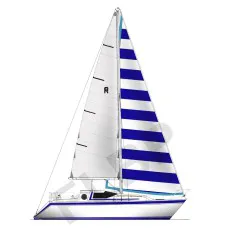
Roberts 310 Boat Plan
Roberts 310 This design may be built with either a regular trunk cabin or a pilot house. It is al..
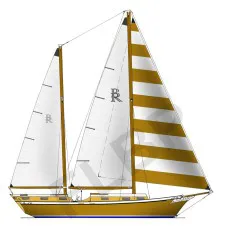
Henry Morgan 32 Boat Plan
Roberts Henry Morgan 32 This is an earlier design that traditionalists may find appealing. It is ..

Roberts 34 Boat Plan
Roberts 34 This is an earlier design that still enjoys a great amount of popularity. It has been ..

Canoe Stern 341 Boat Plan
Roberts Canoe Stern 341 Designed by Graham Shannon this is for those of you that are looking for ..
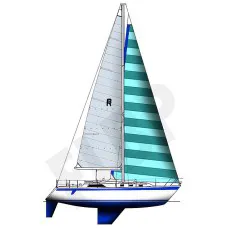
Roberts 345 Boat Plan
Roberts 345 Originally this was designed for lightweight frameless multi-chine steel construction..
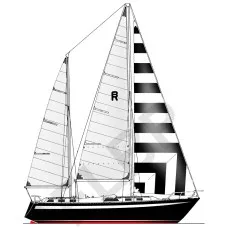
Roberts 35 Boat Plan
Roberts 35 This is a classic modern design that has been built as a production boat in many parts..
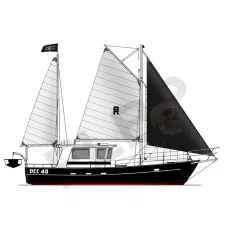
PCF 36-40 (Pacific Coast Fisherman) Boat Plan
Roberts PCF 36-40 (Pacific Coast Fisherman) This design may be built as a motor sailer for family..
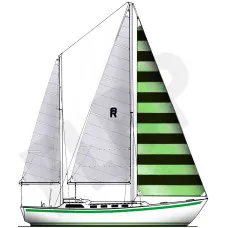
Roberts 36 Boat Plan
Roberts 36 This design is a well proven world cruiser as many are currently sailing in different ..
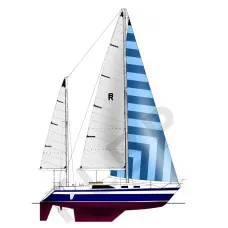
Roberts 370 Boat Plan
Roberts 370 Such has been the response to this design that plans for it's construction are availa..
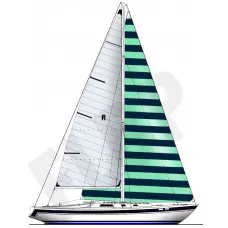
Offshore 38 Boat Plan
Roberts Offshore 38 Full plans for this design are available for building in round bilge Fibergla..

Power Catamaran 39 Boat Plan
Roberts Power Catamaran 39 These catamarans were designed to be built using the fibreglass panel ..

Roberts 39 Boat Plan
Roberts 39 This design is available only in multi-chine hull form, sloop or, with the addition of..
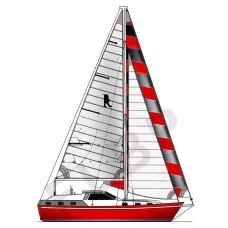
Roberts 392 Boat Plan
Roberts 392 This design is a companion to the Roberts 39 which until now had only been available ..

Roberts 40 Boat Plan
Roberts 40 This design comes with either a centre cockpit or a pilot house layout. There is adequ..

Step-By-Step Guide: How to Build a Wooden Sailboat – Complete DIY Tutorial
Alex Morgan
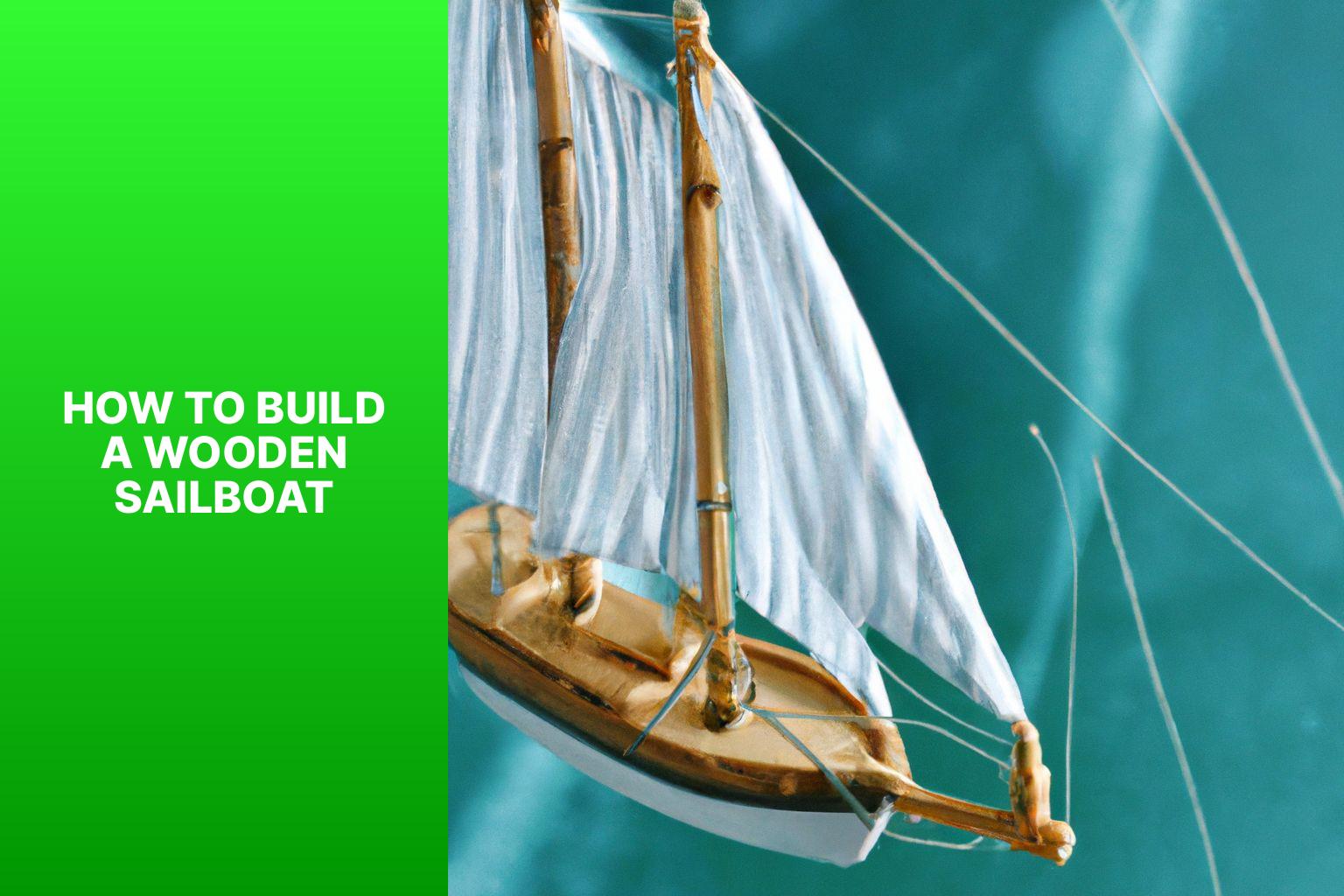
Building a wooden sailboat is a rewarding and fulfilling endeavor that allows you to create your own vessel for sailing adventures. Whether you’re a seasoned sailor or a woodworking enthusiast, constructing a wooden sailboat requires careful planning, attention to detail, and a love for craftsmanship. This comprehensive guide will take you through the step-by-step process of building a wooden sailboat, from choosing the right design and gathering the necessary materials to assembling the framework, building the deck and cabin, and installing the sails and rigging. We will also discuss the finishing touches and regular maintenance required to keep your wooden sailboat in optimal condition for years of enjoyment on the water. Let’s dive into the world of wooden sailboat construction and embark on this exciting journey together.
Key takeaways:
Key takeaway:
- Choosing the right design and plans is crucial: Research different sailboat designs and select suitable plans based on your skill level to ensure a successful project.
- Gather the necessary materials and tools: Pay attention to wood selection and preparation, as well as acquiring the tools and equipment needed for building your wooden sailboat.
- Attention to detail in the construction process is important: Prepare and assemble the framework carefully, focusing on lofting, laying out the keel, constructing the ribs, and the hull structure to ensure a sturdy and reliable sailboat.
Choosing the Right Design and Plans
When it comes to building a wooden sailboat, one of the crucial steps is choosing the right design and plans. In this section, we’ll take a deep dive into the world of sailboat designs and explore the vast array of options available. From researching different sailboat designs to selecting plans that match your skill level, we’ll guide you through the exciting process of bringing your wooden sailboat dream to life. So, hop aboard and let’s set sail on this exhilarating journey of craftsmanship and adventure.
Researching Different Sailboat Designs
When conducting research on sailboat designs, it is important to take into account a variety of factors in order to select the most suitable design. One of the primary considerations is whether you prefer a monohull or a multihull sailboat. Monohulls are more commonly found and offer superior performance when sailing upwind, whereas multihulls provide both stability and speed.
Another aspect to consider is your level of sailing experience. If you are a beginner, it is advisable to seek out designs that are easier to handle and forgiving. On the other hand, experienced sailors may gravitate towards performance-oriented designs that are ideal for racing or long-distance cruising.
It is crucial to think about how you intend to use the sailboat. Are you looking for a day sailer , a cruiser , or a racing boat ? Each design comes with its own set of distinctive features and characteristics.
Determining the appropriate size of the sailboat is another crucial step, which should be based on the number of people and activities you plan to have on board. You must also decide whether you prefer an open cockpit or an enclosed cabin .
To find the perfect sailboat design that aligns with your sailing goals and preferences, it is imperative to thoroughly research various options and take into consideration all of these factors. By doing so, you will be able to make an informed decision and select the ideal sailboat design.
Selecting Suitable Plans for Your Skill Level
When it comes to building a wooden sailboat, it is crucial to select suitable plans that match your skill level. This is important as it ensures that you have the necessary knowledge and expertise to effectively complete the construction. In order to help you with this, here is a table that outlines the different skill levels and the corresponding plans:
Choosing the right plans for your skill level is essential as it enables you to navigate the construction process smoothly, avoid any complications, and ultimately achieve the desired result. It is crucial to honestly evaluate your woodworking skills and then select plans that align with your abilities. Keep in mind that building a wooden sailboat demands patience , attention to detail , and a willingness to learn and improve your woodworking skills.
As a pro tip, if you are a beginner, it is advisable to start with simpler plans and gradually work your way up to more complex projects. This allows you to gain experience and confidence in your woodworking abilities over time. So always remember to select suitable plans for your skill level and enjoy the process of building your wooden sailboat.
Gathering the Necessary Materials and Tools
When it comes to building a wooden sailboat, gathering the necessary materials and tools is key . In this section, we’ll dive into the exciting world of selecting and preparing the right wood for your sailboat, as well as the essential tools and equipment you’ll need to bring your project to life. So, start sharpening your creativity and let’s sail away into the realm of wooden boat construction!
Wood Selection and Preparation
Incorporating the provided keywords naturally in the provided text:
1. Conduct research on the different types of wood used in boatbuilding, such as mahogany , teak , or oak . This will help you make an informed decision regarding the most suitable wood for your sailboat.
2. Determine the specific requirements of your sailboat design in order to guide your wood selection process. Each design may have different needs and preferences when it comes to the type of wood to be used.
3. Take into consideration the durability and resistance to rot of the wood options available. This is crucial to ensure the longevity and overall quality of your sailboat. Choosing a wood that can withstand exposure to water and other elements is essential.
4. Look for straight , dry , and defect-free wood. This will contribute to the structural integrity of your sailboat. Any defects or irregularities in the wood may compromise its strength and performance.
5. Calculate the amount of wood needed based on the specific design and measurements of your sailboat. This will help you estimate the quantity of wood required for the construction process.
6. Mill or cut the wood into the required dimensions and shapes as outlined in the sailboat design. This step is crucial for achieving the desired structure and appearance of your sailboat.
7. Prior to assembly, it is important to sand the wood surfaces thoroughly. This will remove any rough edges or splinters, ensuring a smooth and safe finish.
8. Apply a protective coating or sealant to the wood in order to prevent water damage. This will help preserve the wood and extend its lifespan .
By following these steps, you can ensure that the wood selected and prepared for your sailboat construction is suitable and of high quality.
Tools and Equipment Needed for the Project
When embarking on the construction of a wooden sailboat, it is crucial to have the appropriate tools and equipment to ensure successful completion.
To accurately measure and obtain precise alignment and dimensions, essential measuring tools such as a tape measure , combination square , and level are indispensable.
For shaping wooden components, cutting tools like a circular saw or table saw , jigsaw , and hand saw are necessary.
Joinery tools, including a chisel set , mallet or hammer , and drill with different-sized bits, are vital for smoothly joining parts together.
To achieve a polished finish, sanding and finishing tools such as sandpaper with varying grits, sanding blocks , and a random orbital sander are crucial.
Additionally, brushes and rollers are required for the application of finishes.
When it comes to safety, it is imperative to prioritize the use of safety goggles , ear protection , a dust mask , and work gloves to ensure personal protection during the construction process.
When selecting tools and equipment, it is essential to invest in high-quality items that are specifically designed for the tasks involved in wooden sailboat building.
By doing so, not only will efficiency be maximized, but the overall quality of the finished boat will also be greatly enhanced.
Preparing and Assembling the Framework
As we delve into the world of building a wooden sailboat, we now find ourselves in the exciting phase of preparing and assembling the framework. In this section, we’ll discover the essential steps that go into setting up the lofting and laying out the keel , as well as the intricacies of constructing the ribs and hull structure. Get ready to immerse yourself in the hands-on process of bringing this magnificent vessel to life!
Setting Up the Lofting and Laying Out the Keel
To properly set up the lofting and lay out the keel for a wooden sailboat, it is important to follow these steps in a systematic manner:
- Firstly, prepare the lofting area by clearing a large, flat space where the plans and measurements will be placed.
- Next, securely attach the keel stock to the lofting platform, making sure it is both level and aligned with the boat’s centerline.
- Using battens, rulers, and pencils, transfer the measurements and lines from the boat plans onto the lofting platform.
- Ensure the accuracy of the waterlines, buttock lines, and other reference lines on the lofting platform by drawing them according to the measurements provided in the boat plans.
- Utilizing the dimensions indicated in the plans, measure and mark the positions of the keel, stem, and transom on the lofting platform.
- Thoroughly examine and adjust all lines and measurements to guarantee their accuracy.
- Identify the locations where any additional frames, bulkheads, or structural elements will connect to the keel, by marking them accordingly.
- Prior to proceeding, double-check all marks and measurements to ensure their accuracy.
The process of setting up the lofting and laying out the keel is an integral step in the construction of a wooden sailboat. It serves as the foundation and reference points for the boat’s overall structure. It is crucial to pay close attention to detail and maintain accuracy throughout the build. By following these steps, you will be on your way to constructing your very own wooden sailboat.
Constructing the Ribs and Hull Structure
When constructing the ribs and hull structure of a wooden sailboat, follow these steps:
– Measure and cut the ribs: Use the plans as a guide to mark and cut the dimensions on the wood. Cut the ribs accurately.
– Attach the ribs to the keel: Position and attach the cut ribs evenly along the keel using marine epoxy and screws.
– Install chines and stringers: Attach the chines to the bottom edge of the boat and install the stringers along the sides for strength.
– Attach the planking: Cut and fit planks to cover the rib and stringer structure, securing them tightly.
– Reinforce the joints: Apply epoxy and fiberglass tape over the joints to strengthen the structure.
– Shape the hull: Use tools to shape and smooth the hull, paying attention to fairing for optimal hydrodynamics.
– Apply a protective finish: Coat the hull and ribs with marine-grade varnish or epoxy for durability.
– Perform a thorough inspection: Check for defects, cracks, or imperfections and make necessary repairs before moving forward.
The process of constructing wooden sailboats has evolved over time, combining traditional techniques with modern materials and tools. Craftsmanship, attention to detail, and an understanding of wood’s properties are still essential in constructing the ribs and hull structure. This blend of artistry and engineering ensures sailboats can withstand the demands of the sea while providing a smooth and enjoyable sailing experience.
Building the Deck and Cabin
Let’s dive into the exciting world of building a wooden sailboat! In this section, we’ll focus on the crucial element of constructing the deck and cabin. Get ready to explore the process of creating the deck framework and adding those essential interior features . From laying the foundation to crafting a cozy cabin space , we’ll uncover the key steps and considerations for bringing your wooden sailboat to life. So, grab your tools and let’s set sail on this exhilarating construction journey !
Creating the Deck Framework
When creating the deck framework for a wooden sailboat, follow these steps:
- Measure and mark the desired deck size and shape on the boat’s frame.
- Cut and shape the wooden planks or panels to match the marked measurements.
- Align the planks or panels horizontally across the frame, ensuring they are straight and evenly spaced.
- Secure the planks or panels to the frame using screws or nails, ensuring tight fastening.
- Add additional support beams or joists underneath the deck for added strength and stability.
- Sand the deck surface to create a smooth and even finish.
- Apply a weather-resistant sealant or paint to protect the deck from moisture and UV damage.
- Install necessary features or fixtures on the deck, such as hatches, cleats or railings.
Pro-tip: Enhance the deck’s strength and durability by adding epoxy or marine adhesive between the joints before securing the planks or panels.
Installing the Cabin and Interior Features
When building a wooden sailboat, it is important to pay attention to every step, including the installation of the cabin and interior features. To install these features, follow the following steps:
1. First, measure and cut the materials for the cabin walls, floor, and ceiling.
2. Next, securely fit the cabin walls in place.
3. Then, attach the floorboards to the cabin base using screws or nails.
4. Align and install the cabin ceiling.
5. If desired, add insulation for extra comfort.
6. Attach interior features such as cabinets, storage compartments, and seating areas.
7. Install windows and hatches to allow for natural light and ventilation.
8. Properly wire the cabin for electricity, ensuring that lights and outlets are installed and functioning.
9. Finish the interior by sanding and applying a protective coat of varnish or paint.
10. Ensure that all installations meet safety standards.
Precision and attention to detail are key when installing the cabin and interior features of a wooden sailboat. By carefully measuring, cutting, and fitting each component, you can ensure a secure fit. It is important to optimize the layout and functionality of the interior features to create a comfortable living space with ample storage. The addition of windows and hatches will enhance comfort and enjoyment by providing natural light and ventilation . If electricity is needed, proper wiring is essential to ensure necessary lighting and power outlets. Finishing the interior with a protective coat of varnish or paint will not only enhance aesthetics but also provide durability.
Remember, the goal is to create a cozy retreat for sailors, so it is important to put in the necessary effort to install the cabin and interior features correctly.
Installing the Sails and Rigging
Set sail with confidence as we dive into the exciting world of installing the sails and rigging for your wooden sailboat. Discover the key considerations in choosing the perfect sails and master the art of setting up and adjusting the rigging. With expert tips and tricks , this section will equip you with the knowledge to navigate the waters with ease and experience the thrill of sailing your wooden masterpiece .
Choosing the Right Sails
When choosing sails for your wooden sailboat, consider the following factors:
– Type of sailing: Determine if you plan to cruise , race , or do both. Different sails are designed for specific purposes.
– Boat size: The size of your sailboat determines the size and number of sails you need. Larger boats require bigger sails , while smaller boats may need fewer and smaller sails .
– Wind conditions: Consider the typical wind conditions in your sailing areas. Different sails perform better in light winds , heavy winds , or various wind conditions.
– Sail material: The material of the sails affects durability and performance. Material choices include Dacron , laminate , and nylon . Each material has different trade-offs between longevity, performance, and cost.
– Reefing options: If you sail in varied or unpredictable wind conditions, choose sails with reefing options. Reefing allows you to adjust the sail area for stronger winds, improving control and safety.
– Manufacturer reputation: Research sail manufacturers for their reputation and reliability. Read reviews, seek recommendations, and consider warranty and customer support.
By considering these factors, you can make an informed decision when choosing sails for your wooden sailboat. Remember, the right sails greatly impact your sailing experience, so take your time and choose wisely.
Setting Up and Adjusting the Rigging
When setting up and adjusting the rigging of a wooden sailboat, it is important to follow these steps to ensure proper and safe rigging.
To start, attach the mast to the deck using a mast step or mast partner for stability and support. This will provide the foundation for the rigging.
Next, secure the standing rigging , which includes the shrouds and stays , to the mast. This will help distribute the forces from the sails and ensure the stability of the mast.
Connect the forestay to the bow of the sailboat. This will keep the mast in line and control the position of the headsail.
To counteract forces from the headsail and maintain rigging tension, attach the backstay to the stern of the boat.
Use turnbuckles or rigging screws to adjust the tension in the standing rigging. This will ensure proper alignment and support of the mast.
Install the running rigging , including halyards and sheets , to control the position and tension of the sails.
Before and during sailing, it is important to regularly check the tension in the rigging to ensure performance and safety.
Make any necessary adjustments to the rigging during sailing in order to optimize the shape of the sails and enhance the performance of the boat.
By following these steps, you will be able to properly set up and adjust the rigging of your wooden sailboat, allowing for safe and enjoyable sailing experiences.
Finishing Touches and Maintenance
When it comes to completing your wooden sailboat and keeping it in top shape, this section has got you covered. We’ll dive into the art of applying exquisite finishes to the hull and deck, giving your sailboat a stunning appearance. And don’t worry, we won’t neglect the nitty-gritty details of regular maintenance and care, ensuring your wooden vessel remains seaworthy for years to come. So, let’s get ready to add those finishing touches and keep your sailboat sailing smoothly !
Applying Finishes to the Hull and Deck
When building a wooden sailboat, applying finishes to the hull and deck is crucial for durability and aesthetic appeal. Here are the steps to follow:
1. Prepare the surfaces: Sand down rough spots, fill in cracks and imperfections, and ensure a smooth and clean surface.
2. Choose the right finish: Consider the type of wood and desired look. Varnish provides a glossy and traditional appearance, while paint offers different colors and styles.
3. Apply the primer: Enhance adherence and create an even surface for the final coat by applying a primer.
4. Apply the finish: Use a brush or roller to apply the chosen finish coat to the hull and deck. Follow the manufacturer’s instructions for drying times and application techniques.
5. Allow for drying and curing: Follow the manufacturer’s instructions for drying and curing to ensure the finish is fully set and provides maximum protection.
6. Inspect and touch up: After drying, inspect the hull and deck for missed spots or imperfections. Touch up any areas that require additional finish for a seamless and polished look.
By following these steps and applying finishes properly, you can protect and enhance the hull and deck of your wooden sailboat, ensuring it looks beautiful and lasts for many years.
Regular Maintenance and Care for Your Wooden Sailboat
Regular maintenance and care for your wooden sailboat is crucial for its longevity and performance. Here are the steps to follow:
1. Inspect the hull and deck for damage like cracks or rot. Promptly repair any issues to prevent further damage.
2. Clean the boat regularly with mild detergent and freshwater to remove dirt, salt, and grime that can accumulate over time.
3. Apply a protective coating to the hull and deck using marine-grade varnish or paint to prevent water penetration and protect against UV damage.
4. Check the rigging and sails for wear or damage. Replace worn-out lines or rigging components for safe sailing.
5. Inspect wooden components such as the mast, boom, and rudder for rot or decay. Replace or repair as necessary to maintain structural integrity.
6. Keep the interior of the sailboat clean and dry to prevent mold and mildew growth. Use a dehumidifier if needed.
7. Regularly check and maintain the boat’s systems , including electrical, plumbing, and navigation equipment. Address any issues promptly.
8. Store the wooden sailboat in a suitable location, such as a covered boat dock or boatyard, when not in use. Protect it from extreme weather conditions.
Pro-tip: Establish a regular maintenance schedule and keep a detailed record of all maintenance and repairs. This will help you stay organized and ensure your wooden sailboat remains in optimal condition.
Some Facts About How To Build A Wooden Sailboat:
- ✅ Building a wooden sailboat can take approximately 100 hours over a span of 3 months. (Source: Instructables)
- ✅ A wooden sailboat can cost around $1,000 to build. (Source: Instructables)
- ✅ The boat is typically built from 4×8 sheets of plywood and measures 8 feet in length. (Source: Instructables)
- ✅ Various tools such as a pull-saw, table saw, router, sander, and drill are needed for building a wooden sailboat. (Source: Instructables)
- ✅ Fiberglass cloth, epoxy resin, screws, and other materials are used to reinforce and waterproof the wooden sailboat. (Source: Instructables)
Frequently Asked Questions
1. how long does it take to build a wooden sailboat.
Building a wooden sailboat typically takes about 100 hours spread over approximately 3 months.
2. What materials are needed to build a wooden sailboat?
To build a wooden sailboat, you will need 4×8 sheets of plywood, epoxy resin, oak plywood, various tools (such as a pull-saw, table saw, router, etc.), fiberglass cloth, screws, fasteners, and other supplies like glue, clamps, and mixing cups.
3. How much does it cost to build a wooden sailboat?
The estimated cost of building a wooden sailboat is around $1,000, including the materials and tools needed for the project.
4. Can I learn to build a wooden sailboat if I have no prior experience?
Yes, building skills can be learned gradually, and mistakes can be avoided along the way. With patience and guidance from boat building plans, even beginners can successfully build a wooden sailboat.
5. How long is the wooden sailboat described in the reference?
The wooden sailboat described in the reference is an 8-foot long pram, featuring classic lines and made from 4×8 sheets of plywood.
6. Can I launch the wooden sailboat in any body of water?
Yes, the wooden sailboat is designed to be light enough to fit in a small pickup truck or be rolled to a local lake on a dolly, making it suitable for various bodies of water.
About the author
Leave a Reply Cancel reply
Your email address will not be published. Required fields are marked *
Save my name, email, and website in this browser for the next time I comment.
Latest posts

The history of sailing – from ancient times to modern adventures
History of Sailing Sailing is a time-honored tradition that has evolved over millennia, from its humble beginnings as a means of transportation to a beloved modern-day recreational activity. The history of sailing is a fascinating journey that spans cultures and centuries, rich in innovation and adventure. In this article, we’ll explore the remarkable evolution of…

Sailing Solo: Adventures and Challenges of Single-Handed Sailing
Solo Sailing Sailing has always been a pursuit of freedom, adventure, and self-discovery. While sailing with a crew is a fantastic experience, there’s a unique allure to sailing solo – just you, the wind, and the open sea. Single-handed sailing, as it’s often called, is a journey of self-reliance, resilience, and the ultimate test of…

Sustainable Sailing: Eco-Friendly Practices on the boat
Eco Friendly Sailing Sailing is an exhilarating and timeless way to explore the beauty of the open water, but it’s important to remember that our oceans and environment need our protection. Sustainable sailing, which involves eco-friendly practices and mindful decision-making, allows sailors to enjoy their adventures while minimizing their impact on the environment. In this…
WOODEN BOW TIES
How to build a wooden sailboat: a beginner's guide.
Are you interested in building your own sailboat? If so, building a wooden sailboat can be a rewarding and fulfilling experience. Not only will you have a unique vessel to call your own, but you’ll also learn valuable woodworking skills along the way.
To get started, you’ll need to gather the necessary materials and tools. This may include oak plywood, epoxy resin and hardener, thickener, brad nails, masking tape, a pull-saw, and a table saw. Once you have everything you need, you can begin the process of building your sailboat. From creating a jig and frame assembly to making the mast, there are many steps involved in building a wooden sailboat. But with patience and attention to detail, you can create a beautiful and functional vessel that will bring you joy for years to come.
Understanding the Basics of a Wooden Sailboat
If you are interested in building a wooden sailboat, it’s important to understand the basics of how a sailboat is constructed. In this section, we’ll cover the parts of a wooden sailboat and the different types of wooden sailboats.
Parts of a Wooden Sailboat
A wooden sailboat is made up of several parts, each with its own unique function. Here are some of the most important parts:
- Hull : The hull is the main body of the boat. It is the part of the boat that sits in the water and provides buoyancy.
- Keel : The keel is a long, narrow fin that extends down from the bottom of the hull. It helps to keep the boat from capsizing by providing stability.
- Rudder : The rudder is a flat piece of wood or metal that is attached to the back of the boat. It helps to steer the boat.
- Mast : The mast is a tall, vertical pole that supports the sails.
- Sails : The sails are large pieces of fabric that are attached to the mast and other parts of the boat. They catch the wind and propel the boat forward.
- Boom : The boom is a horizontal pole that is attached to the bottom of the mast. It helps to control the shape of the sail.
Types of Wooden Sailboats
There are many different types of wooden sailboats, each with its own unique characteristics. Here are some of the most common types:
- Dinghy : A dinghy is a small sailboat that is typically used for recreational sailing or racing.
- Sloop : A sloop is a sailboat with a single mast and a fore-and-aft rig.
- Ketch : A ketch is a sailboat with two masts, with the main mast taller than the mizzen mast.
- Yawl : A yawl is a sailboat with two masts, with the mizzen mast located aft of the rudder post.
When choosing a type of wooden sailboat to build, it’s important to consider your needs and experience level. A dinghy is a good choice for beginners, while a ketch or yawl may be more suitable for experienced sailors.
By understanding the basics of a wooden sailboat and the different types available, you can make an informed decision about which type of boat to build.
Choosing the Right Materials
When building a wooden sailboat, choosing the right materials is crucial to ensure the boat’s durability and performance. In this section, we will discuss the two most important materials you’ll need to choose: wood and sails/rigging materials.
Selecting the Right Wood
Choosing the right type of wood for your sailboat is critical. You want a wood that is strong, lightweight, and resistant to rot and decay. Some of the most popular types of wood used in sailboat building include:
- Cedar: Lightweight and easy to work with, cedar is an excellent choice for planking and decking.
- Mahogany: Strong and durable, mahogany is often used for building frames and keels.
- Oak: A dense and hard wood, oak is commonly used for building frames and planking.
When selecting your wood, make sure it is free of knots, cracks, and other defects that could weaken the boat’s structure. You should also consider the wood’s grain pattern, as this can affect the boat’s strength and appearance.
Choosing Sails and Rigging Materials
The type of sails and rigging materials you choose will depend on the type of sailboat you’re building and your sailing needs. Some of the most common materials used in sail and rigging construction include:
- Dacron: A strong and durable synthetic material, dacron is commonly used for sailcloth.
- Nylon: Lightweight and flexible, nylon is often used for spinnaker sails.
- Stainless Steel: Strong and corrosion-resistant, stainless steel is commonly used for rigging hardware.
When selecting your sails and rigging materials, consider the conditions you’ll be sailing in and the type of sailing you’ll be doing. For example, if you’ll be racing, you may want to choose lightweight sails and rigging materials that will help you achieve maximum speed. On the other hand, if you’ll be cruising, you may want to choose more durable materials that can withstand rougher conditions.
By choosing the right materials for your wooden sailboat, you can ensure that your boat is strong, durable, and performs well on the water.
Designing Your Sailboat
Before you start building your wooden sailboat, you need to design it. This will involve creating a blueprint and determining the size and shape of your boat.
Creating a Blueprint
Creating a blueprint is an essential step in designing your sailboat. It will help you visualize your boat and ensure that you have all the necessary components in place. You can create a blueprint using software such as AutoCAD or SketchUp, or you can draw it by hand.
When creating your blueprint, consider the following:
- The length, width, and height of your boat
- The position of the mast and sails
- The location of the rudder and keel
- The number of cabins and their layout
- The placement of any storage compartments or equipment
Determining the Size and Shape
The size and shape of your sailboat will depend on several factors, including your budget, the type of sailing you plan to do, and the number of people who will be on board.
Consider the following when determining the size and shape of your sailboat:
- The type of sailing you plan to do (coastal cruising, racing, etc.)
- The number of people who will be on board
- The amount of storage space you will need
- The amount of deck space you will need
- Your budget
Once you have determined the size and shape of your sailboat, you can start gathering materials and building your boat.
Building the Hull
When building a wooden sailboat, the hull is the most important part of the boat. It is the main structure that holds everything together and keeps the boat afloat. Building the hull requires cutting and assembling the wooden frame.
Cutting the Wood
To begin building the hull, you will need to cut the wood into the appropriate sizes and shapes. The wood should be cut according to the plans or blueprints that you have created. You can use a saw or a jigsaw to make the cuts.
It is important to use high-quality wood that is free of knots or other defects. The wood should be strong enough to withstand the pressure and weight of the water. Common types of wood used for building a wooden sailboat include cedar, oak, and mahogany.
Assembling the Frame
Once you have cut the wood, you can begin assembling the frame of the hull. The frame is made up of vertical pieces of wood called frames, which hold the shape of the boat. The frames are attached to the keel, which is the main structure that runs down the center of the boat.
To assemble the frame, you will need to use a sawhorse or other support to hold the lumber in place. You can then use screws or bolts to attach the frames to the keel. It is important to ensure that the frames are level and straight.
After the frames are attached to the keel, you can add the planks to the hull. The planks are attached to the frames and keel using screws or nails. It is important to ensure that the planks are properly aligned and spaced.
Once the planks are attached, you can sand and finish the hull to give it a smooth and polished look. This will also help to protect the wood from the elements.
Building the hull of a wooden sailboat requires patience and attention to detail. With the right tools and materials, you can create a strong and beautiful hull that will last for years to come.
Installing the Deck and Cabin
Installing the deck and cabin of your wooden sailboat is a crucial step in the construction process. It not only adds to the aesthetics of your boat but also provides structural support. Here are some tips to help you through the process.
Deck Installation
The deck of your wooden sailboat should be installed after the hull has been completed and before the cabin is built. It is important to ensure that the deck is watertight to prevent any leaks. Here are the steps to follow when installing the deck:
- Cut the deck to fit the hull and sand the edges to ensure a tight fit.
- Apply a layer of epoxy to the hull and deck joint to seal it.
- Secure the deck to the hull using screws or bolts.
- Apply a layer of fiberglass cloth and epoxy to the deck to make it watertight.
- Sand the surface of the deck to prepare it for painting or varnishing.
Cabin Installation
The cabin of your wooden sailboat provides shelter and storage space. It is important to ensure that it is properly installed to prevent any leaks. Here are the steps to follow when installing the cabin:
- Build the cabin on a flat surface using marine-grade plywood.
- Cut the cabin to fit the deck and hull and sand the edges to ensure a tight fit.
- Apply a layer of epoxy to the cabin and deck joint to seal it.
- Secure the cabin to the deck using screws or bolts.
- Apply a layer of fiberglass cloth and epoxy to the cabin to make it watertight.
- Install any windows, hatches, or doors in the cabin.
- Sand the surface of the cabin to prepare it for painting or varnishing.
By following these steps, you can ensure that your wooden sailboat’s deck and cabin are properly installed and watertight. This will not only make your boat look great but also ensure that you have a safe and enjoyable sailing experience.
Setting Up the Mast and Sails
Now that you have built your wooden sailboat, it is time to set up the mast and sails. This process may seem daunting, but with a little patience and attention to detail, you can have your boat ready to sail in no time.
Step 1: Install the Mast
The first step is to install the mast. Depending on the design of your boat, the mast may be a single piece or assembled from multiple sections. Make sure the mast is secured properly and is straight. Use a level to ensure the mast is vertical in both directions.
Step 2: Prepare the Sails
Next, prepare the sails. Make sure the sails are clean and free of any debris or damage. Attach the sail to the mast using the halyard, which is a rope used to raise and lower the sail. Make sure the sail is hoisted all the way to the top of the mast.
Step 3: Attach the Boom
Attach the boom to the mast and secure it with a boom vang, which is a rope used to control the angle of the boom. The boom is the horizontal spar that holds the bottom edge of the sail.
Step 4: Set the Sail
Once the boom is attached, set the sail. Adjust the angle of the boom and the sail to catch the wind and start moving. You can use the main sheet to control the angle of the sail and the boat’s speed.
Step 5: Trim the Sail
Finally, trim the sail to optimize its performance. This involves adjusting the sail’s shape and position to maximize its power and minimize drag. Use the sail controls, such as the cunningham and outhaul, to adjust the sail’s shape. Use the main sheet to control the sail’s position relative to the wind.
Congratulations! You have successfully set up the mast and sails of your wooden sailboat. Now it’s time to hit the water and enjoy the thrill of sailing.
Applying Finishing Touches
When it comes to building a wooden sailboat, applying the finishing touches is a crucial step that can make all the difference in the final product. Here are some tips and tricks to help you get the perfect finish.
Sanding and Finishing
Before you can apply any finish, you need to make sure the surface is smooth and free of imperfections. This means sanding the wood with progressively finer grits of sandpaper until you achieve the desired smoothness. Once you’ve finished sanding, you can apply a wood conditioner to help the wood absorb the finish more evenly.
When it comes to choosing a finish, you have several options. Some popular choices include varnish, paint, and oil. Varnish is a popular choice for wooden boats because it provides a durable, glossy finish that can withstand the harsh marine environment. Paint is another option, but it requires more maintenance than varnish and may not provide as much protection against the elements. Oil is a good choice if you want a more natural look, but it may not provide as much protection as varnish or paint.
Painting and Varnishing
If you decide to go with paint or varnish, there are a few things to keep in mind. First, make sure you apply the finish in a well-ventilated area to avoid inhaling fumes. Second, make sure you apply thin, even coats and allow each coat to dry completely before applying the next. This will help prevent drips and ensure a smooth finish.
When it comes to varnishing, it’s important to use a high-quality brush and work quickly to avoid brush marks. You may also want to consider using a foam brush for hard-to-reach areas. Once you’ve applied the final coat of varnish, you can buff the surface with a soft cloth to achieve a high-gloss finish.
Painting requires a different approach. You’ll need to choose the right type of paint for your boat and make sure you apply it evenly. If you’re painting a large area, you may want to consider using a paint sprayer to achieve a smooth, even finish. Once the paint has dried, you can apply a clear coat to protect the paint and give it a glossy finish.
In conclusion, applying the finishing touches to your wooden sailboat is an important step that requires careful attention to detail. By following these tips and using the right tools and materials, you can achieve a beautiful, long-lasting finish that will protect your boat and make it stand out on the water.
Safety Measures
When building a wooden sailboat, safety should always be your top priority. Here are some safety measures you should take to ensure a safe and successful build.
Installing Safety Equipment
Before you start building, make sure you have all the necessary safety equipment installed in your workshop. This includes fire extinguishers, smoke detectors, and first aid kits. You should also have a clear and unobstructed path to the exit in case of an emergency.
When working with power tools, always wear eye and ear protection, as well as a dust mask to protect your lungs. If you are using chemicals, make sure you are working in a well-ventilated area and wear gloves and a respirator if necessary.
Conducting a Safety Check
Before you start working on your sailboat, conduct a safety check to make sure everything is in order. Check that all tools and equipment are in good working order and that there are no loose or damaged parts. Make sure your work area is clean and free of clutter, and that all cords and cables are properly secured.
When working with wood, be aware of any knots or cracks in the wood that could weaken the structure of your sailboat. Use only high-quality marine-grade wood and be sure to follow the plans carefully to ensure a strong and safe boat.
By following these safety measures, you can ensure that your wooden sailboat build is a safe and enjoyable experience.
Maintaining Your Wooden Sailboat
Congratulations on building your own wooden sailboat! Now that you have a beautiful vessel, it’s important to keep it well-maintained to ensure its longevity and safety on the water.
Regular Maintenance
Regular maintenance is essential to keep your wooden sailboat in top condition. Here are some tips to keep in mind:
- Clean your boat regularly with a mild soap and water to prevent dirt and grime buildup.
- Check for any signs of damage, such as cracks, rot, or loose fittings, and address them promptly.
- Apply a fresh coat of varnish or paint every few years to protect the wood from the elements.
- Keep your boat covered when not in use to protect it from the sun and rain.
Seasonal Maintenance
In addition to regular maintenance, there are also some seasonal tasks that you should perform to keep your wooden sailboat in top condition:
- At the beginning of the season, inspect the hull for any damage or wear and make any necessary repairs.
- Check the rigging and sails to make sure they are in good condition and make any necessary repairs or replacements.
- Before storing your boat for the winter, make sure to properly winterize it to protect it from the cold and moisture.
Additional Tips
Here are some additional tips to keep in mind when maintaining your wooden sailboat:
- Use high-quality marine-grade products when cleaning and maintaining your boat.
- Avoid using harsh chemicals or abrasive materials that can damage the wood.
- Regularly check the bilge for any water buildup and pump it out as needed.
- Keep your boat well-ventilated to prevent moisture buildup and mold growth.
By following these tips, you can keep your wooden sailboat in top condition and enjoy many years of safe and fun sailing.
Leave a Reply Cancel reply
You must be logged in to post a comment.
- Types of Sailboats
- Parts of a Sailboat
- Cruising Boats
- Small Sailboats
- Design Basics
- Sailboats under 30'
- Sailboats 30'-35
- Sailboats 35'-40'
- Sailboats 40'-45'
- Sailboats 45'-50'
- Sailboats 50'-55'
- Sailboats over 55'
- Masts & Spars
- Knots, Bends & Hitches
- The 12v Energy Equation
- Electronics & Instrumentation
- Build Your Own Boat
- Buying a Used Boat
- Choosing Accessories
- Living on a Boat
- Cruising Offshore
- Sailing in the Caribbean
- Anchoring Skills
- Sailing Authors & Their Writings
- Mary's Journal
- Nautical Terms
- Cruising Sailboats for Sale
- List your Boat for Sale Here!
- Used Sailing Equipment for Sale
- Sell Your Unwanted Gear
- Sailing eBooks: Download them here!
- Your Sailboats
- Your Sailing Stories
- Your Fishing Stories
- Advertising
- What's New?
- Chartering a Sailboat
How to Build a Boat
If you want to know how to build a boat you've come to the right place, because that's what we did, learning as we went. She's called Alacazam , and you can see her in action in the picture above, charging through the Caribbean Sea off Montserrat. And we're going to take you through the entire sailboat construction process...
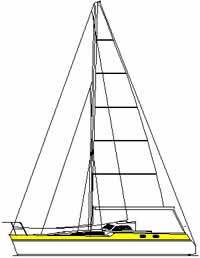
Jumping forward several years...
She was called 'Alacazam' , from the great Nat King Cole's song Orange Coloured Sky, and these are her vital statistics...
- Length overall: 11.5m (37.5 feet)
- Waterline length: 10.6m (34.5 feet)
- Beam: 3.9m (12.5 feet)
- Draft: 2.2m (7 feet)
- Displacement: 7,023kg (7.75 tons)
- Displacement/length ratio: 159
- Sail area/displacement ratio: 18.28
Of course you don't have to start from scratch as we did; there are a few other boat building options available that could save time and maybe cash too.
Whichever option you choose it's a very good idea to think the whole project through from beginning to end, as nothing can cause more disruption and additional cost than changing your mind halfway through a boat construction project.
It's an inescapable fact that cost and size are closely related, but not in a linear fashion as you might assume. If you double the length of the boat you're likely to increase the costs by a factor of four; and not just the build costs, but owning and operating costs too. Just wait until anti-fouling time comes around and you'll see what I mean.
Berthing costs seem to take a hike at around 12m (40ft) overall, and another at 15m (50ft), which was the final compelling factor in sizing our self-build cruising sailboat at 11.5m (38ft) on deck. This allowed for the anchor poking out at one end and the self-steering gear at the other, just in case any marina employee should get overzealous with the tape measure.
But where do you want to start? Here are your three main options:
- Buy an old, tired boat and completely refurbish her, or
- Buy a bare hull and deck moulding for home completion, or
- Start from scratch, and build the hull yourself.
We'll take a look at these three options in turn:
1. Starting With a 'Fixer-Up'
This can be a great option, particularly if you can get your hands on an old but tired pedigree boat with a proven reputation like the Ted Brewer designed Morgan 28 shown here - and you might just get it at an absolute knockdown price.
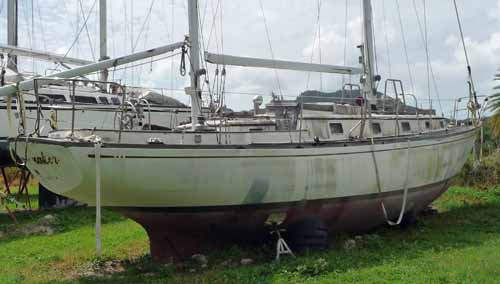
With luck, much of the interior will be salvageable, but you'll probably want to bring the instruments and electronics up to date, replace the rig and all the rigging, install a new engine and stern gear and replace the hatches and much of the deck equipment.
But you really should get a professional surveyor involved before you take up such a project. Explain to him carefully what your intentions are, and ask him to prepare his report with that in mind; it could save you a whole heap of time and money.
2. Starting from a Bare GRP Hull
This approach will get you off to a flying start, particularly if the hull comes with the deck moulding already fitted and the bulkheads bonded in. The problem will be in finding one, as few manufacturers seem to offer this once popular option these days.
3. Starting from Scratch
You need to take a very deep breath before setting off along this route - and believe me, I know, because this is how we built our custom designed sailboat Alacazam .
Unless you're building from an established set of boat plans, you'll be well advised to get a yacht designer involved at the outset.
And one of your first decisions will be the choice of hull material - fibreglass, steel, aluminium, ferro-concrete or wood - but which one, and why?
The Outline Requirements for our 'Ideal Cruising Sailboat'
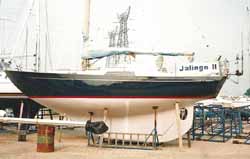
My current boat at the time was a Nicholson 32 Mk10. Jalingo was a narrow hulled, heavy displacement, long keeled cruiser that I'd sailed thousands of miles - much of it singled handed (until I met Mary, who put paid to all of that self indulgence) - off the shores of the UK, France, Spain and Portugal, and to the Mediterranean and back.
Her hull shape and displacement ( Jalingo's , not Mary's) meant that she was comfortable in a seaway and great in a blow, but sluggish in light winds - and that keel meant she was a nightmare to handle in the confines of a marina.
Like all long-distance sailors we had a good idea as to what our 'ideal cruising sailboat' would be. I've always thought that a cutter rigged sloop is the ideal the ideal rig for a cruising boat, with a roller furling jib , a hanked-on staysail (easy to replace with a storm jib when necessary) and a slab-reefing mainsail with lazy jacks , as I don't trust either in-mast furling or in-boom furling .
Additionally she would:~
- have high resistance to capsize;
- be robust and easy to maintain;
- have good performance under sail;
- have a comfortable, easy motion underway;
- be easily manageable by a small crew;
- have sufficient internal volume for comfortable living aboard;
- be affordable to own and operate.
Did we know how to build a boat with these desirable characteristics? No, but we knew a man who did. Enter Andrew Simpson, yacht designer, surveyor and shipwright - and one of my best chums...
The Designer's Proposals for our Ideal Cruising Sailboat
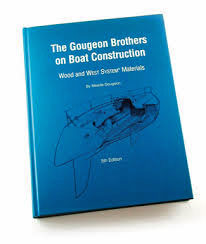
We discussed all this at length, and made a number of sketches of both the interior layout and an efficient, workable cockpit .
Andrew did the number crunching and came up with an outline design for a 38ft (11.5m) cutter rigged wood/epoxy (cedar strip) water-ballasted cruising boat.
"She'll be light, quick, robust and comfortable" he said
"And seaworthy?" we asked
"Eminently so" he replied
"Right" we said, "Let's do it!"
And so we did...
So How Did We Build Alacazam ?
Here's the whole story, in words and pictures.
How to Build a Boat:
- Part 1: The All-Important Preparation
- Part 2: How to Build a Boat Hull in Western Red Cedar
- Part 3: Sheathing the Hull in Woven Glass Rovings
- Part 4: Cutting and Installing the Plywood Bulkheads
- Part 5: Building the Interior Structure
- Part 6: Constructing the Deck and Coach Roof
- Part 7: Moulding the GRP Cabin Top
- Part 8: Fitting the Bulb Keel
- Part 9: Making the Rudder
Next: How to Build a Boat, Part 1
Recent Articles
'Natalya', a Jeanneau Sun Odyssey 54DS for Sale
Mar 17, 24 04:07 PM
'Wahoo', a Hunter Passage 42 for Sale
Mar 17, 24 08:13 AM
Used Sailing Equipment For Sale
Feb 28, 24 05:58 AM
Here's where to:
- Find Used Sailboats for Sale...
- Find Used Sailing Gear for Sale...
- List your Sailboat for Sale...
- List your Used Sailing Gear...
Our eBooks...

A few of our Most Popular Pages...

Copyright © 2024 Dick McClary Sailboat-Cruising.com
Boat Reviews
- Aquila Boat Reviews
- Aspen Boat Reviews
- Avalon Boat Reviews
- Aviara Boat Reviews
- Axopar Boat Reviews
- Barletta Boat Reviews
- Bayliner Boat Reviews
- Centurion Boat Reviews
- Charger Boat Reviews
- Cruiser Yachts Reviews
- Formula Boat Reviews
- Fountaine Pajot Reviews
- Freeman Boatworks Reviews
- Galeon Luxury Yachts Reviews
- Intrepid Boat Reviews
- Jupiter Marine Reviews
- Manitou Boat Reviews
- Native Watercraft Reviews
- Phenom Yacht Reviews
- Pursuit Boat Reviews
- Sailfish Boat Reviews
- Sea Ray Boat Reviews
- Sea-Doo Watercraft Reviews
- SeaVee Boat Reviews
- Solace Boat Reviews
- Windy Boat Reviews
- X Shore Boat Reviews
- Yamaha Boat Reviews
- Boats Specs
- Marine Pros
- Boat Insurance
- Boat Warranties
- Boat Transport
- Boat Towing
- Marine Forecasts

Your Ultimate Boating Resource

2024 Pursuit OS 445: An Overview
Boat safety 101: exploring the serenity and adventure of boating, the moment of truth – 6 signs you need a new boat, is it possible to wakesurf on a pontoon boat, 2024 aquila 47 molokai review, 2024 sea-doo switch 13 sport review, 2024 aspen c120 review, what is the duration required to construct a 40-foot sailboat.
Building a sailboat can be a daunting task for many people, and questions about the amount of time and effort required are common. One of the most frequently asked questions is how long it takes to build a 40-foot sailboat.
It’s essential to understand that every sailboat is unique and built to order, so the duration required for construction varies depending on multiple factors such as the design, materials, and equipment specifications. However, an average 40-foot sailboat takes around six to eighteen months to build, depending on several factors. Below are some of the factors that affect the duration of sailboat construction:
The design of a sailboat impacts the duration of the building process. A high-performance sailboat with complex designs may take longer to build than a more straightforward design. Complex designs require more time, effort, and attention to ensure that the boat is structurally sound and safe to sail.
The materials used in the construction of a sailboat also affect the duration of the building process. Boats made from aluminum or fiberglass may take longer to build than boats made from wood. Aluminum and fiberglass boats require more attention and detail since they are typically custom-fabricated, which takes a lot of time.
The number of people working to build the sailboat also affects the duration. Typically, the crew of builders includes naval architects, designers, engineers, and craftsmen. A more extensive crew means that the work can be divided into smaller sections, which results in faster completion.
Customization
The amount of customization for the sailboat is also a significant factor that affects the duration of construction. A fully bespoke boat, customized down to the last detail, will take much longer to build than a more generic/standard model. Customization adds significant value to any boat, but it also requires additional time.
In summary, the duration required to construct a 40-foot sailboat can vary widely, depending on multiple factors, including design, materials, personnel, and customization. While a standard boat may take six to twelve months, a custom-built model can take up to eighteen months or even more. It’s essential to plan, talk to the designers or building team, and keep track of the progress to ensure the boat is completed within the set timeframe. It’s crucial to remember that when it is done with care and precision, the end result, a seaworthy sailboat, is worth all the effort and time spent in construction.
Related Questions
What type of wood is used for pier pilings, what is the difference between a dock and a floating pier, what is the proper technique for pulling a beginner wakeboarder, what does ‘no wake’ mean on a lake, what is the difference between wash and wake, is wakesurfing possible in the sea, why don’t wooden piers rot, what size wakeboard is needed, how to achieve more pop on a wakeboard, does wake surfing translate to ocean surfing, latest posts, the top 9 reasons to maintain a meticulous boat log, don't miss, our newsletter.
Get the latest boating tips, fishing resources and featured products in your email from BoatingWorld.com!
Eco-Savvy Sailing: Expert Tips for Reducing Fuel Costs and Enhancing Your Boating Experience
Sea safety blueprint: constructing the perfect float plan for your boating adventures, 10 essential tips for fishing near private property, the benefits of using a drift sock: guidance for anglers, lure fishing: secrets for imitating live bait and attracting fish, explore the untapped depths of america’s best bass fishing spots, tackle your catch-and-release adventures with these 6 tips, outboard motor maintenance: tips for keeping your engine in top shape, the essential boat tool kit: tools every boater needs, diy boat building: 8 tips and tricks for building your own vessel, the art of miniature maritime craftsmanship: ship in a bottle, antifouling paints: a guide to keeping your boat shipshape, beginner’s guide to standup paddle boarding: tips and techniques, boating for fitness: how to stay active on the water, kayak safety: how to stay safe on the water, anchoring in a kayak or canoe: how to secure your small boat, 2024 yamaha 222xd review, 2024 sailfish 316 dc review, 2023 seavee 340z review, 2023 centurion fi23 review, gear reviews, megabass oneten max lbo jerkbait review, fortress anchors fx-7 anchoring system review, fortress anchors fx-11 anchoring system review, fortress anchors commando anchor kit review, fortress anchors aluminum anchors review, stay in touch.
To be updated with all the latest news, offers and special announcements.
- Privacy Policy

DIY Cruising Catamaran: Complete Building Guide
As an Amazon Associate, we earn from qualifying purchases. We may also earn commissions if you purchase products from other retailers after clicking on a link from our site.
A brand-new cruising catamaran can set you back a hefty amount of money. However, a DIY cruising catamaran provides a more affordable way to own your own boat. While building a large boat can be an extremely challenging and time-consuming experience, nothing beats the pleasure of bringing your own boat to life.
To build a DIY cruising catamaran, buy good design plans, determine your budget and find a working space. Next, choose your hull material, buy supplies and start building the mast beam. Build and sheathe the hull, install bulkheads, the interior, and finally, launch the catamaran boat.
In this article, you will find a complete guide to building your own catamaran. You will also find detailed information on why you may want to consider building your catamaran and approximately how much this project would cost. Finally, we will explore the advantages and disadvantages of building a catamaran from scratch.
Why You Might Want To Build Your Own Catamaran
Most people might think that purchasing a used boat to repair and fix it up would be cheaper than a DIY cruising catamaran. But while building your own catamaran could be an enormous undertaking, it also comes with many advantages over buying something used.
Other than the unique opportunity to create beautiful memories and experiences while cruising, sailing, and exploring beautiful coastlines, there are a number of benefits that come along with the DIY approach.
Knowing Your Boat
Building your own catamaran provides you with intimate knowledge of your boat. You will know every corner, including where to find every bolt, wire, bulkhead, rib, hose, and support as you installed them yourself. This knowledge will enhance your confidence while at sea since you will have entrusted your life to a boat whose history you are aware of and deeply connected to.
Pride of Ownership
The satisfaction you get from crafting something with your own hands is immense. As a result, the knowledge that you built your boat from scratch will fill you with absolute pride and an immense sense of achievement. Furthermore, as an owner-builder, you get to keep and enjoy the boat for as many years as you wish.
Substantial Cost Savings
Building your catamaran will work out cheaper than buying a new or even gently used boat. Though you will likely require some additional labor since doing some things will require an extra pair of hands, if you are particularly good at DIY, you will save a significant amount of money on labor costs as a whole.
Freedom To Create Your Own Designs
If you decide to buy a catamaran boat, it might not be easy to find one that meets your unique needs. However, instead of choosing from production boats that bear traditional and outdated designs, you can come up with an ultra-modern design or style for your catamaran. You also get to pick your layout, size, and equipment based on your taste and budget.
Great Learning Experience
Building your own boat will help you pick up numerous skills that will come in handy later when sailing your boat. As much as you might still require an expert to help you with specialized skills like carpentry or wiring, your new skills will serve you well. This will also be beneficial when it comes to your boat’s maintenance and fixing things for yourself.
What To Look For in Catamaran Boat Designs
When deciding on the type of catamaran boat to build, you may want to choose a design that’s simple and easy to build. This is because doing so will allow you to spend a shorter time building the boat.
You also need to have a set of requirements to guide you in choosing your design or what you might call an ideal cruising catamaran wish list. This is essential because, ultimately, you want to build a boat that offers outstanding qualities such as:
- Delivers good speed
- Affordable to own and operate
- Agile, strong, and easy to maintain
- Has a high resistance to capsizing
- Great for sailing and cruising
- Delivers a comfortable and easy motion underway
- Good handling ability and high performance under sail
- User-friendly embarking and disembarking
- Provides ample living and accommodation space
- Presents a reasonable resale value
It’s worth noting that, in general, catamaran boats tend to offer a fair resale value mainly because of scarcity and the high price accorded to production models. So, if you build a well-constructed catamaran, you are bound to get a return that’s much higher than the cost of materials upon resale.
It’s also good to consider whether the design you settle on is from an established designer. This is significant because documentation of the building process is just as valuable when it comes to selling the boat.

How Much Would It Cost To Build Your Own Catamaran?
The cost of building your cruising catamaran will depend heavily on the size of the boat you plan to build and the skills you bring to the table. To give you an idea of probable costs, a professionally built 40 foot (12.1 m) long cruising catamaran could go for up to $300,000.
Though building it yourself will undoubtedly be cheaper, most DIY boatbuilders tend to underestimate the expected costs. Your final costs should cover not only the cost of material and equipment but also the labor and time it would take to come up with the final product.
If you were to build a 40-foot (12.1-meter) catamaran, your cost of materials would range between 20-30% of the total cost. Therefore, for $300,000 total, the boat’s materials would range between $60,000 and $90,000. The hull tends to range between 15-35% of the total build. Again, this depends on the finish and furniture.
But before you even start working on the DIY project, you will need to figure out where to do the work. If your home has ample space, then you can opt for a backyard building. But if you live in a small apartment, then you might want to consider renting a small garage at first and then move on to a boatyard later. This is one of the significant costs involved in building your multi-haul.
What You Will Need
To get a clearer picture of how much the entire project would cost, let’s have a look at what else you will need to purchase.
- Good design plans
- Working space
- Ground tackle
- Matting and roving
- Equipment such as the engine, windows, rudders, deck fittings, mast, and rigging
In addition to the above, you also need to install plumbing and electricals. You may also want to consider going electric rather than using diesel. Not only will this drastically reduce your maintenance costs, but you get to use the regenerated power for all of your housing needs while sailing.
Some catamaran boat designs help you save costs by advocating the use of less expensive corpus materials. Most of the material goes directly into making the boat, which means there is hardly any wastage on vacuum bagging . With this method, there are few molds and temporal building forms and fewer fillers to grind off as waste. All these factors reduce the time and cost it takes to build your catamaran boat.
That said, building a boat of any kind is a huge financial undertaking. As such, you still need to have the financial ability to keep building; otherwise, your project will stall or take much longer than anticipated. Instead of enjoying yourself and making memories cruising to faraway lands, you might end up spending all your time building a seemingly never-ending boat.
To reiterate, this project is more of a labor of love, given that it involves a tremendous amount of manual work. Calculating an hourly rate on the time spent building the boat and adding this cost to that of materials may make it seem a very pricey exercise. However, it is vital to understand that your time matters, and every hour you spend working for “free” should be included.
With that in mind, you need to ensure that you are fully devoted to the boat construction project and are sure you want to do it before you begin. Stopping halfway because it seems like too much work would be incredibly costly.
How To Build a Catamaran
When it comes to building a cruising catamaran, you have 3 main options:
- You can buy an old boat and refurbish it.
- Purchase a bare hull plus deck molding for a home-boat building.
- Start from scratch and build everything, including the hull, on your own.
As mentioned above, renovating an existing boat may end up being more costly than starting from scratch. To build a catamaran boat from scratch, follow the below step-by-step guide.
Prepare the Essentials
Before you jump into such a large project, there are several important aspects to consider:
- Buy your plans from an established catamaran designer. You can also get inexpensive, easy-to-build catamaran designs online.
- Get access to a large working space or build a shed . Depending on your climate, you may need to opt for climate control to avoid an excess of moisture in humid areas.
- Decide on your choice of hull material. This could be fiberglass, aluminum, steel, wood, or ferroconcrete.
- Start working on a bill of materials estimate. Include everything that you think you need to get a better idea of the initial costs.
Build the Mast Beam
Using wood and epoxy, cut and glue together the pieces of wood that will form the mast beam. Most of the work at this stage can occur in a garage since it involves building small parts. Still, the work could take up to 4 months, so be prepared to put in long hours.
Build the Boat Hull
Now, it’s time to build the boat’s hull. A catamaran comprises two hulls which are connected with a deck. Below is a short video showing how to build a hull mold:
This work requires a larger facility, so you might need to move out of the garage and into a boatyard. If you don’t have access to a larger workshop, consider building a shed where you can work as you do the construction. Make sure there’s enough room to fit the boat and also allow you to work comfortably. To cover the shed, you can use opaque white tarps.
Sheathe the Hull
Get all the materials you require for this stage in the construction, such as lots of resin, fiberglass, and foam for use in the hull cores. You’ll also require matting and glass roving to sheath the hull .
Sheathing helps to make the hull impervious to water and other marine borers. But first, you need to prepare the hull using a rotary sander. To make it as smooth as possible, use light, sweeping strokes. This is a very dusty task so be prepared to wear a facemask and safety goggles.
Install the Bulkheads
Next is installing the plywood bulkheads . You might need to call in friends to help turn the hulls or use a crane. In this step, you will need to laminate the hull sides on the molded hull panels and bond them above the bulkheads. Ensure the bulkheads are snug and sealed in place.
Construct the Interior Structure
Over the next couple of months, the boat work will involve joining the hulls together with the beams that you had made back in the garage. Then, install the cuddy cabin, decks , and the cockpit . Soon the boat will start to take the shape of a catamaran.
Next, proceed to construct the major structural components such as stairs, hatches, mini-keels, and the interior. Then comes the work of fairing the boat, which is quite labor-intensive.
Finally, it’s time to apply primer on the catamaran boat and start the paintwork. Before painting the boat, you will need to do additional sanding to finish off the two layers of primer as well as fill all the pinholes. Since it’s a large boat, the catamaran has lots of surface area; thus, the sanding could get extremely exhausting—mentally and physically—at this point.
The painting can take a while, too. The hulls are the easiest to paint, but the topsides, non-skid, as well as masking and prepping could seem never-ending.
The final stretch involves working on the center bridge deck cabin and other final touches like installing the engines, electricals, and plumbing. This is also the time to fix the rudders, rigging, mast, windows, and deck fittings.
Launch Your Cruising Catamaran
After many months or years of hard work, your cruising catamaran is finally ready to test the waters. After lowering the boat into the water, check carefully in case there are leaks. If none, you can set up the sails and take your catamaran out for your first cruise.
Below is a short video that takes you through the entire boat-building process:
If you don’t have deep pockets, don’t despair. It’s also possible to build an inexpensive catamaran boat, as shown in this post from the coastal passage .
The Pros of Building a Catamaran
Though it will be a costly endeavor, there are so many things to look forward to should you decide to build your own catamaran:
- It can be lots of fun.
- You get to have a new boat.
- It’s an excellent hobby for DIY enthusiasts.
- The effort is rewarding.
- It offers a great learning experience.
- You get the exact kind of boat you want.
- You can alter building plans and tailor the boat to suit your specific needs.
- It might be cheaper than buying a new boat.
The Cons of Building a Catamaran
Though there are a number of positive aspects to a DIY build, it is just as important to keep in mind that it won’t always be easy:
- Maintenance costs can be quite high.
- It’s both mentally and physically exhausting.
- It might require some technical know-how.
- It can take many months or even years to complete.
- It requires a lot of commitment to finish the DIY project.
- It might be challenging as well as expensive to get insurance.
- You will spend almost all your free time building the boat.
DIY Cruising Catamaran Tips and Tricks
If you are new to boat building, it would be a good idea to build a small boat first. This would give you a good indication as to whether you’d enjoy tackling a more extensive project like building a catamaran. Again, if you are the handy type, fixing your own electronics could also save you a significant amount of money.
Here are more tips and tricks to get the most out of your DIY cruising catamaran:
- Lower your costs. Bring down your costs even further by sourcing for parts and supplies at marine surplus outlets, Craigslist, eBay, or wholesale suppliers.
- Enhance your resale value. Most home-built boats are not easy to sell since they tend to be too customized. To enhance your resale value, it’s advisable to work with a standard design from a well-established naval architect.
- Follow the design instructions. Make sure to follow the designer’s instructions regarding the type of materials and tools to use during the build to avoid making costly mistakes.
- Maintain your original budget. Avoid any additional customizations once you have started building the boat. Using good plans and sticking to them ensures that your budget doesn’t spiral out of control.
Final Thoughts
Building a catamaran is about more than saving money. It’s fun, exciting, fulfilling, and can be a great learning experience. While it might take many months of back-breaking work, comparative shopping and sourcing for materials will help you save a lot of money. Still, at the end of it all, you’ll have a beautiful catamaran boat, all ready for your first cruising adventure.
However, if you have neither the time nor the energy to build your own catamaran from scratch, refurbishing an existing hull might prove faster and easier. It also works out much cheaper than buying a new boat.
Owner of CatamaranFreedom.com. A minimalist that has lived in a caravan in Sweden, 35ft Monohull in the Bahamas, and right now in his self-built Van. He just started the next adventure, to circumnavigate the world on a Catamaran!
One thought on “ DIY Cruising Catamaran: Complete Building Guide ”
Hello, I am a French Quebecer who is original, imaginative, creative and who finds that all boats and catamarans have a huge flaw and a very big lack of logic. I would have a brand new concept…. I am sending this message to any catamaran creator – designer to make those who have the opportunity and the intelligence to want to know about my innovative idea which will finally upset the market much richer. An idea that will totally change the concept of sailing, navigation and save so much worry!! All I would ask for is a small percentage of each sale of the new product. To be able to make me produce one when I have enough!! It is certain that like that, you just want to tell me: come on Mr. Lessard give us your idea but do not take your word to help me in return! But, if you are the kind of man to have only one word and maybe have a proof of your good faith if the realization of the project would make it… I will be very happy!! Giving it to everyone wouldn’t bother me either…. all I would like is to be able to find flax fiber (too expensive carbon) to be able to try to make my catamaran myself. Because not rich! Have a nice day and looking forward to having a message!!
Leave a Reply Cancel reply
Your email address will not be published. Required fields are marked *
Save my name and email in this browser for the next time I comment.
Recent Posts
Must-Have Boat Gear for Catamaran Sailors!
Sailing is probably the most gear-intensive activity I've ever done; there are so many decisions to be made about what gear to buy now, for tomorrow, and what to definitely never buy. The gear on...
6 Best Trailerable Trimarans For Bluewater and Coastal Sailing
Having a boat costs a lot of money, even when you are not using it, marina fees, etc. And once it is in the water most sailors never go very far from their "home marina" and sailing will be somewhat...
Log in or Sign up
You are using an out of date browser. It may not display this or other websites correctly. You should upgrade or use an alternative browser .
Cheapest cost to self-design & self-build a 45ft sailboat
Discussion in ' Boat Design ' started by sailingrock , Dec 26, 2018 .
sailingrock New Member
Looking to design and build own custom sailboat. Very tight budget. Aware there are cheaper ways, but want me OWN DESIGN. Are my estimates bonkers even for a brain dead zombie-lover like me? To be built in haunted barn on cursed ground near a pet cemetery. Mostly high lat sailing. Naval Arch to generate minimal drawings to my design Prices in thousands, words in English. Resemble dufour 12000ct ketch with modded butt-area. Willing to buy used crap, except for hull and engine Boat: Alum or Fiberglass Hull, 45ft, monohull, ketch or schoony, beam 13.5. 3300 hrs = Est. build time 05 = Naval Arch 30 = Hull and deck 08 = keel 18 = Engine + Accessories 05 = Electrical (gen, batts,solor, wiring, panel, the bla) 03 = Water(maker, tanks, bla) 03 = Heads and stuff 03 = Interior wood/textiles (min) 03 = Galley stuff 01 = Heating crapoola 02 = Trans to wawa from barn(10mi) 04 = Masts, rigging, sails... 04 = Autopilot, charts, all electonical thingys 00 = Everything else that I left out. 89 = Stupid Total Can this be true? Can it be done for 89 thousand smackerooos?????
Squidly-Diddly Senior Member
I'm thinking 3300hrs only if you are already a bonfide $100/hr tradesman. To produce at that nominal "$100/hr" rate you need a $25/hr helper, just for cleanup, running to store, as well as admin and "semi-admin" tasks like keeping track of all the parts that arrival on their own schedule out of sequence. Figure on $100,000 worth of tools and shop rigging (at least $20K of weird new stuff even if you think you "have everything") and supplies like cleaners, thinners, sandpaper, bits, blades, dustmasks, gloves, etc. Never built a boat that size but first thing I'd do is pour nice concrete slab in the old barn. Maybe find TWO different exp boatbuilder guys to act as "build consultants" to come over and give the project the once-over at critical points. I say TWO because chances are one will give up or otherwise not work out and I'm sure they will have diff approaches to earning their consulting fee. Try to get one Design Guru and one Build Guru. How spartan will interior be? As reference, new kitchen cabinets (2uppers, 2lowers, fake stone, sink, stove, microwave, dishwasher, etc) from Home Depot cost $15,000 installed in San Jose in 2002 (during downturn when labor was cheap). That was for a rental home, LL not wanting anything weird or fancy, buying whatever was on sale.
I'm in Michigan. No way that for a kitchen here without going the fancy-smancy road. I can do my own wood-working and re-purpose as I need. The main goal is to see how cheaply person X can get their own design built and on the water. That would be the challenge or theme of the whole project. Great for videos, I think. I'm willing to scrounge around for stuff to use including cannibalizing old very cheap sailboats that I can get my hands on. My opinion of sailboat is that it is a boat and should have the look and feel of approximating old frigates, carracks, pirate ships. It should not have the feel of a space ship or race car or some 21st century advanced technological contraption. I think those kinds of boats (e.g., Garcia Exploration 45) are disgusting. So, "spartan" in the sense of no extraneous electronics or motors to open and close doors. No draw after drawer after drawer and cabinet after cabinet. It can all be done so much more simply. You also have to have the ability to "get lost" below deck. By this, I mean, you want to be out of sight of everyone else gathered in that saloon without being forced to retreat to your berth. A "nook" must be designed into the plan. Furthermore, even if it means subtracting a square foot or two from the living space, I want GOOD maintenance access to nearly everything and not just through stupid "technical doors". I believe that I have accomplished this. Now I want to build it. I'm hoping that 3300 hours is the minimum to get it in the water and sailing. I can add over the months thereafter as I continue to work on it. I'm looking for it to eventually be my new home.
Mr Efficiency Senior Member
What method was used to arrive at the 3300 hours figure ?
Angélique aka Angel (only by name)
‘‘ Cheapest cost to self-design & self-build a 45ft sailboat ’’ Well, it depends on your standards, plus your skills, and your work ethics and work speed, and available work time, and the choice of materials and their local costs, and the availability of a almost free or free building spot, in 2012 a 72' sailing cat took only four months and a few $ to sail away from a beach near Banjul in Gambia, so everything is possible , or not . . ‘‘ This is a time-lapse video of a wooden sailing ship being built in Gambia, West Africa, 2012. We went from a stack of planks to a sailable vessel in just four months. ’’ ‘‘ This is the story of how Bill Probert took 37 years to build his Alan Buchanan 1949 Wild Duck. Please share this tale of an amazing man who never gave up his passion to build his first classic yacht. ’’ ‘‘ We joined Bill for the first sail on the Wild Duck that took him 37 years to build. ’’
gonzo Senior Member
Anything that resembles a Doufour will require expensive materials and high skills. None of which you have. For the price you are estimating, a barebones workboat type can be built; but not in 3300 hours by an inexperienced person. The masts and standing rigging will cost more than $4,000. Add sails, running rigging and deck hardware to that. Finally, and most important, your design will likely be poor and have structural problems. After working on the build for a couple of years, you will learn enough to see the defects. That will lead you to undo a large part of what you built to do it properly. At the very least, find a design by an experienced person. There are plenty of classic designs that can be had for free.
kapnD Senior Member
One man working 8 hour days pencils out to approximately 2000 hours a year, so you will be finished in a year and a half ! Don’t buy the champagne just yet...
M&M Ovenden Senior Member
Hi, If you are looking at a common hull design you are better off searching for a used hull / boat. Your budget seems like a bit on the low end, I would expect the NA to be more to get complete CAD files for cutting (Aluminium)... don't think fiberglass is a home build material. Cheers, Mark
Think about these kind of designs, maybe they're at least good for some inspiration ... Dudley Dix : 52¼' Steel Cargo Schooner Tad Roberts : 52' Steel Cargo Schooner - - 54½' Steel Cargo Schooner George Buehler ¹ : 50' Melquiades ( in the below vid ) - - 60½' Melquiades See also Tom Colvin' s ¹ designs ( those are Wayback Machine links ) Here mentioned measurements is LOD, all can be converted to alu I think, the rigs can be converted within what suits the boat if you like to do so. ¹ decedent
JSL Senior Member
If you have not designed or built a boat before allow (at least) about 25% of your time for the learning process plus about 15% of your time for correcting mistakes and 10% for cleaning up, etc. An idea: find a 'good deal' used boat you like and buy it. Faster, probably cheaper (in the long run). If you cannot afford it, you probably would not be able to build the equivalent for much less. (updated 18-12-31 )
Angélique said: ↑ See also Tom Colvin' s ¹ designs ( those are Wayback Machine links ) ¹ decedent Click to expand...
![building a 40 foot sailboat [IMG]](https://www.boatdesign.net/proxy.php?image=https%3A%2F%2Fweb.archive.org%2Fweb%2F20060621224437im_%2Fhttp%3A%2F%2Fthomasecolvin.com%3A80%2Fimages%2F43.jpg&hash=256e6d21413e537288b5cf74cb0339c8)
Milehog Clever Quip
If you have never built a boat before build a dinghy first. Seriously.
That's good advice, also thinking of a own recipe without the how to knowledge, and even without ever having baked a cake at all, is a disaster waiting to happen, which isn't so bad if it only concerns $ 2 for cake ingredients and a first time effort for this of only ½ an hour , but even then I've never heard of it happening successfully that way ...
fallguy Senior Member
I am building a 32' powercat and the time budget is 4000; dollars $100k, all my work and some help; so 80% is materials. It is easy to laugh at your lack of wisdom here. Double both budgets and you'll be closer. That boat is pretty big to build. You might want to drop the size a bit to get the hours budget down. These large boats take LOTs of time to build. You'll quickly discover each section of the boat takes hours and hours. Self design is a horrible concept if something fails. Far better to find a likeable design and hire the NA to modify to suit. Best of luck.
- Advertisement:
sailingrock said: ↑ Naval Arch to generate minimal drawings to my design Click to expand...
Cheapest DIY Bugout Sailboat
The cheapest stable boat tender possible.
Can someone link me to the easiest posible and cheapest possible runabout designs
Hull Production Moulds - Cost per m2
What is the role of establishing a salvage platform on the seabed when salvaging Costa Concordia?
Is there any cost to surfing a boat's wake (to the boat in front)
Help with cost estimation
the Cost of Cruising
Early estimates of boat cost
how much would it be? (design cost for 40' boat)
- No, create an account now.
- Yes, my password is:
- Forgot your password?

How Much Sailboats Cost On Average (380+ Prices Compared)
Turns out that owning a sailboat is pretty affordable. OK, it isn't cheap, but it can absolutely be done on a budget. In this article, I'll show you exactly what to expect.
Sure, super yachts are expensive, but so is everything super (except for maybe supermarkets). But a modest, used sailboat can be as cheap as $2,500 and an additional $1,400 per year.
It may come as a surprise to you that you can get a decent sailboat for as little as $1,500 on Craigslist.
Average sailboat costs at a glance
We've compared thousands of listings, so you don't have to. If you just want the ballpark figures, here they are:
The average price of new sailboats is $425,000 ($127,000 to $821,000). The average price of used sailboats is $278,000 ($67,000 to $555,000). Maintenance costs are on average $2,000 - $3,000 per year, and the average total annual cost is $3,000 to $7,000.
Of course the price of a sailboat depends on our choices. We decide whether sailing is a rich man's game, or actually a very good holiday investment. (It beats driving to a bungalow park for sure - both cost-wise and the experience itself.)

How Much To Charter a Superyacht? (Less Than You Think)
Why you should trust us These figures are based on our latest research which was last updated September 26th 2023 . We do this research every year, giving us very accurate numbers and clear insight into the trend of sailboat prices. We've literally compared thousands of sailboat listings over the years, and we've done so methodically. The research is done by our researcher Tay, who is an engineer by trade.
This will be a long article because there are so many aspects to cover. I'd like to spend some time exploring the costs of actually buying the boat. Then I want to go into recurring costs , like mooring, maintenance, and insurance.
To really drive home what you're getting into , I'll give four real-life examples. These examples include every expense as a separate line-item. And we'll go over them line-by-line together.
Then I'll share our exact research results with you . This will include all our numbers: new vs. used, average price per foot, and much more. These are extremely detailed numbers (you don't have to read this if you don't want to).
At the end of the article, we'll discuss why a boat doesn't just cost money: she can actually make you some if you wanted.
- A used family week-ender with a small cabin will cost roughly $30,000 (all-in for the first year).
- If you dream of sailing around the world, expect to spend around $100,000.
- New sailboats on average cost twice as much as used boats.
- Maintenance cost are 5-10% of the boat's value per year. Docking costs are roughly $800 - $2,500 per year.
- Sailboat prices have gone up 30% this year.

On this page:
Average sailboat cost: 2023 summary, examples of popular sailboats, and how much they cost, what does it cost to buy a sailboat, what does it cost to own a sailboat, make or save some money, related questions.
Before we really get into it, I first want to give you the quick rundown. So I've summarized our research for you.
Buying a sailboat
Small boats are up to 30 foot long . They'll be very capable and great for solo sailors or small families who want to go on day trips, or short week-end trips on inland waters. Some of them will have cabins and sleeping quarters, although small.
Medium boats are between 30 and 50 foot long . They'll host larger parties and will be more suited for longer trips, coastal sailing, or even bluewater cruising. Sailboat length isn't necessarily the most important feature for that, though.
Large boats are 50 foot and up . This is proper yacht territory, and they'll be a lot more luxurious, and also exponentially more expensive.
If you buy via a broker, you typically get more reliable boats, but also pay more. If you buy off of Craigslist, you get a fat discount, but there are more lemons on there too.
You could hire a boat surveyor who will inspect the boat before you buy it (much like when you buy a house). Those surveys are not very expensive and can be worth your money.
Owning a sailboat
There are a lot of costs involved with simply owning a boat. The biggest expenses will be docking and maintenance.
Those two alone will account for roughly 80% of your yearly expenses.
- Maintenance : 5-10% of the boat's value
- Docking : $800-$2,500 per year on average, depeding on location
If we want to know what we're getting ourselves into, we should know every expense to the dot.
Below, we'll go over four very different case studies. I'm hoping one of these will relate to your specific situation. It'll show you what to expect and how to budget for your purchase.
The four sailboat case studies
- What does it cost if you want to keep your boat in good shape and have a good sailing experience? - aka: most people
- What does it cost if you ONLY spend the absolute minimum amount to keep her floating?
- If I want to sail the world on a budget, what's the absolute minimum?
- If sailing is more of a status thing to you, how much money COULD you spend?
There are a lot of great boats out there for a good price and there are also some boats that are so expensive (or so cheap), it's not even fun to look at them.
But one thing's for sure: there are plenty of boats available, and even if you're on a very tight budget, you could absolutely still make it work. Sailing in and of itself is actually not that expensive: wind is free, water is free, boats can be cheap - if you're willing to look around a bit. It's all the little extras that add up quickly.
Listed below are 4 boats that make great beginner boats. Since more than 80% of all boats that are bought are second-hand, I'll use the prices of used boats I found on Craigslist.
If you want to know exactly where the numbers come from, don't worry, I'll explain them after the 4 examples.
1. Island Packet 26' for stressless weekends on the lake
The one-time costs are $24,860 Your total recurring costs are $5,650 per year, or $471 per month
Let's say you're like me and most other people and just want a nice boat without too much hassle. So you pay people for complex maintenance. You do the required maintenance and save up for future repairs. You do a little yourself, which saves you a couple of hundred of bucks a year. You also join a (cheap) sailing club to learn how to not trash the boat. You get the right trailer, and you save up some money for future repairs. You don't want to buy a bad boat, so you pay a fair purchase price
One-Time Costs:
Recurring costs:, 2. extreme low budget catalina 22'.
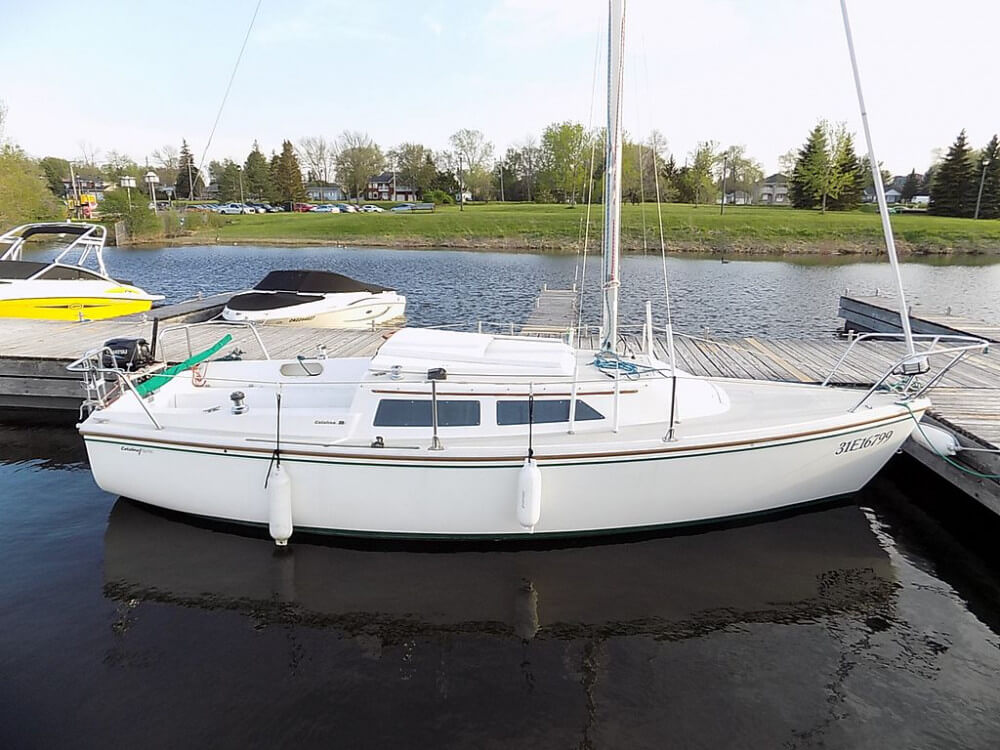
Ok, I'm very interested in how cheap you could actually go (in theory). Is it do-able to buy a very cheap sailboat and just keep her afloat, never change sails, and only pay for maintenance that is absolutely necessary to not sink?
In this scenario, I don't care about speed, so I don't change sails. I certainly won't join a sailing club, and I try to save some money on the marina by boondocking. I also happen to live in a cheap state registration and tax-wise.
Docking costs can get out of hand For an average sailboat, depending on your area and wishes, up to $5,000/year . Read everything about docking costs
I try to pay as little as possible for the boat itself (and I've actually found a Catalina 22 for $2,250 on Craigslist today!). I don't save up for rigging and hardware (tomorrows' worries). I try to get an extra 2 years out of my bottom paint and I only do the essential repairs, and I do them myself. But because I saved so much on the purchase, this little boat needs a lot of maintenance.
Luckily, I have time on my hands and know my way around engines and rigging, so I do all of it myself (with the help of YouTube).
I don't bother with winterizing my boat, I'll just sail somewhere warm. Oh, and I'll use the engine as little as possible to save on gas.
Will your boat be happy? Definitely not, but your wallet will be (for now). Can it be done? It's optimistic, but yes, I think it can be done. But you have to be mechanically inclined, and pretty creative.
The one-time costs are $2,428 Your total recurring costs are $1,380 per year, or $115 per month
Recurring Costs
3. low budget 35' ocean cruiser for traveling the world.

If you dream of crossing oceans, you need a comfortable ride. Usually, most sailors pick a boat that's between 32' - 50' for two person ocean cruising. Anything under 32' gets pretty uncomfortable in high waves, although it can be done.
But this is also the range that gets expensive - quickly . So if we're on a tight budget, but also need a good and reliable boat: how much will it cost?
The boat will cost you $35,000. For this price, I've seen a beautiful 1983 wooden cutter (by Robert Tucker), multiple Beneteau Oceanis from '88 - '89, multiple Bavarias ... plenty of solid choices on the second-hand market here.
In this example, you don't join any sailing clubs (I assume you're pretty experienced if you want to cross oceans). You also don't winterize (you're sailing the Caribbean by now). No trailer, as you won't haul it out of the water any time soon.
You do pay a fair price for the boat because you don't want any surprises during your Tour du Monde. In need of a lot of bottom paint , since you're in saltwater most of the time. It's also a good idea to invest in at least SOME navigation equipment, so for $500 I've added a simple but capable GPS chartplotter and compass.
You can get a cheap but reliable chartplotter and compass for less than $500 - in total. If you want to learn more, head over to the recommended gear section .
The one-time costs are $37,590 Your total recurring costs are $5,425 per year, or $452 per month
4. Powerful 40' Yacht (and everything that goes with it)
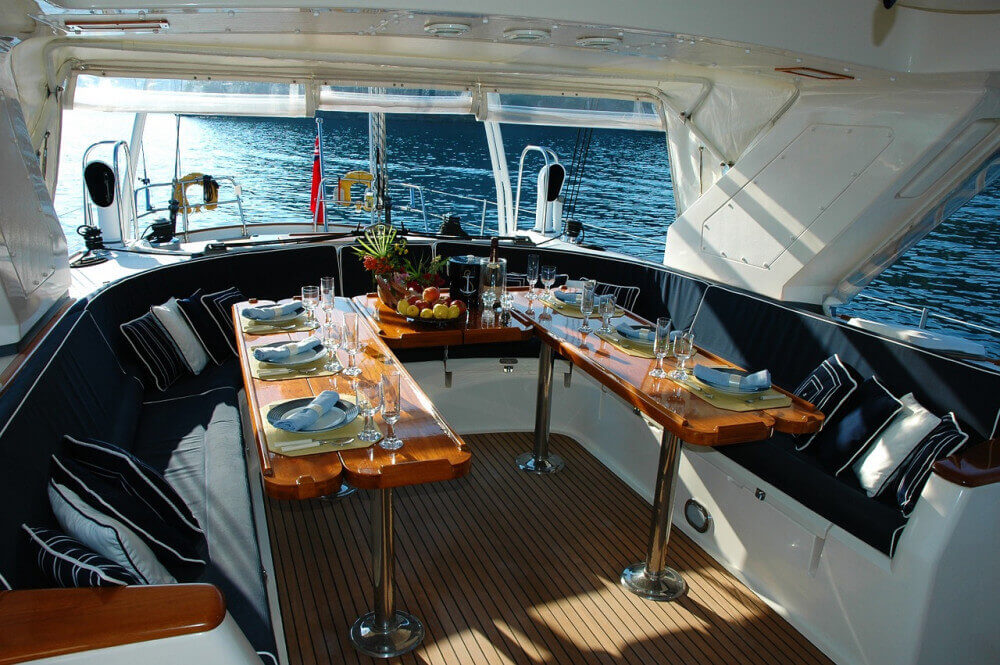
Let's say you're in the game for the fame. What does it cost me to own a grande yacht with all luxuries (and costs) that go with it?
I join an expensive sailing club, hire pros that maintain the thing beautifully, and I also pay for winterization, the best trailer I can find. I replace my sails and running rigging every 5 years - since speed matters to me. Because she's my pride, I paint her every year. I spend an additional 500 bucks a year on special soaps and waxes.
I want a prime mooring location, so I pay a premium. I also get a small boat to hang from the large boat, to get to shore more quickly.
The one-time costs are $166,400 Your total recurring costs are $15,150 per year, or $1,263 per month
There are a couple of important factors that determine how much money you end up spending.
- Size - length determines mooring costs, insurance, amount of paint on your hull, literally everything gets more expensive with every foot of length
- New vs. used - of course, it makes all the difference whether you buy new or used. Typically, the price of a 25-year old used sailboat vs. a comparable new one is 3-4 times lower ($60,000 vs $200,000).
With used sailboats, I find that the price generally increases rapidly from 30 feet onwards
It's the same with new sailboats - or actually, it keeps increasing with every extra couple of feet. The reason is that as the boat gets bigger, it also gets more luxurious (upholstery, finishing, equipment).
The average price of a new sailboat per foot in USD:
- under 30 ft: $3,217 per ft
- 30 - 50 ft: $7,625 - $11,128 ft
- over 50 ft: $14,927 - $78,033 per ft
On average, second-hand sailboats go at 1/3 - 1/4 of the cost of a new boat:
- under 30 ft: $1,773 per ft
- 30 - 50 ft: $6,473 per ft
- over 50 ft: $10,091 - $36,889 per ft
If this is too much for you, you could always rent a boat instead. I recommend chartering. You can get great sailboats at great prices. Check out my charter recommendation here .

Cost of buying a sailboat
Price of new sailboats.
I've looked at the prices of thousands of yachts (really) on one of the largest yacht marketplaces in the world (- not manually, don't worry: with the help of their search function). This is what I came up with:
Source: Yachtworld.com Q3 2023
The price of new sailboats ranges from roughly $1,765 - $78,033 per foot. I've used these numbers to calculate the following list:
Prices per foot in USD
Here's the detailed price per foot for all lengths from 20 to 100 feet:
Price of used sailboats
We did the same for used sailboats, comparing thousands of listings. Here are the complete data:
Source: Yachtworld Q3 2023
The price of used sailboats ranges from roughly $882-$36,889 per foot . Here's the detailed price per foot for all lengths from 20 to 100 feet:
Prices on Craigslist
The price of used sailboats ranges from roughly $476-$2,098 per foot.
To get an average of the price of a used sailboat, I went over to Craigslist. I took the first 20 relevant search results for sailboats under, and over 30 feet.
Of course, the averages here are very speculative, as prices vary from day to day. But it gives a broad range of what to expect.
Over 50 feet, listings become meagre. I believe people tend to not place their 80-ft sailboats on Craigslist, but sell it through a broker instead.
Median Craigslist price of a used sailboat:
- under 30 ft: $11,065
- over 30 ft: $87,020
I've calculated the median price , not the average. The median is the price that's most common within the price range. This way the highest and lowest prices don't have as much impact.
Average Craigslist price-per-foot of a used sailboat:
- under 30 ft: $476 per ft
- over 30 ft: $2,098 per ft
This is what I found on Craigslist under 30 feet:
Washington dc.
Source: Craigslist Washington DC Q3 2023
Los Angeles
Source: Craigslist Los Angeles Q3 2023
Source: Craigslist Houston Q3 2023
South Florida
Source: Craigslist Miami Q3 2023
Source: Craigslist New York Q3 2023
Here's what I found for 30 feet and up:
Sailboat price development.
Compared to our 2022 research, the median price of new sailboats has gone up 22.5% (from $251,000 to $307,500). The average price has gone up 33.6% (from $248,000 to $331,250).
The average price of used sailboats under 30 ft on Craigslist has gone up 30% (from $8,500 to $11,000).
Sailboat prices research archive
You can check our earlier research data here:
- 2022 average sailboat price data
- 2019 average sailboat price data

Catamarans are 60% more expensive
If you dream of owning a catamaran, you should expect to pay roughly 60% more for the boat, and 60% more on annual cost like upkeep and mooring. There are exceptions, of course, and for some boat lengths, new catamarans may be slightly more affordable than a monohull.
I've researched thousands of catamaran listings as well to come up with those numbers. The exact numbers are summarized in my guide on the average cost of buying and owning a catamaran. It's very similar to this article, so if you like this and are curious about catamaran prices as well, I encourage you to check it out.

Average Cost of Buying & Owning a Catamaran (With 4 Examples)
So let's take a quick look at the costs for owning a sailboat.
One-time costs:
- Registration : costs of registration differ per state, but usually run anywhere from $3 - $10 per foot.
- Taxes : differs per state and country. Most governments want you to pay property tax and sales tax. Sales tax is usually about 5%. Property tax varies and is more complex, so I'll leave that up to you to figure out.
- Trailer : $1,000
- Sailing club initiation fee : $1,500 - $4,000
Recurring costs:
- Mooring : $10-15 per foot per year (can be much higher for prime locations)
- Insurance : typically 1.5% of the total value of the boat. So a $50,000 26' cruiser will cost 750 bucks.
- Maintenance : a good rule of thumb is 10% of the boat value. Expect to spend anywhere between $500 - $2,500 per year for small to mid-sized boats.
- Fuel : depends on how much you use the boat and the engine, but on average something between $100 - $150. - Find out how much fuel a sailboat uses in my article here (opens in new tab).
- International License : if you want to sail on international waters, you have to get your ICC (International Certificate of Competence ). Plan on spending anywhere between 400 to 500 dollars.
- Safety equipment : plan on spending anywhere between 150 to 600 bucks for lifejackets, first aid kit, and distress signals.
- Winterize boat : $2,000
- Sailing club: $800 - $1,500

Cost of owning a boat

Maintenance
Your average maintenance cost will be roughly $144 dollars per month for boats under 30', or just under $2,000 per year.
Maintenance involves a lot of hidden costs We took an in-depth look at everything . The result is a comprehensive article that lays it all out for new boat owners. Read all about maintenance costs
Gas engines run for about 1,500 hours, diesel engines run for 5,000. After that, you'll need to change them out.
Most engines will last you about 20 years.
A standard 15HP or 20HP outboard gas engine will cost you about $5,000 - $6,000 and needs replacing every 20 years or so. If you do the work yourself, it's more something like $1,000 - $1,500.
A smaller engine uses less fuel, reducing your total cost You can actually use a pretty small engine for most sailboats. To learn how small (and efficient) you can go, I've written a guide on how to calculate it yourself. Read all about outboard engine size
Replacing the sails and rigging
Most people that own a sailboat will have to replace the sails and rigging at least once in their lifetime. Replacing the mast is uncommon, but if you're unlucky and get demasted, it will need to be fixed. So I've added it to the "be aware this might happen" list - but won't add it to the monthly recurring costs.
If you need to replace the mast and boom, prepare to spend anywhere between $15,000 - $25,000.
I won't go into detail, but I have written a long article about the cost of new sails (opens in new tab). It's a really helpful post (with a formula) if you want to know what to expect.
Good quality cruising sails will need to be replaced every 10 years or so.
The cost of new sails is on average:
- 26' Bermuda Sloop rig will cost you about $1,000 - $2,500.
- 34' Bermuda Sloop rig will cost you about $3,000 - $5,000.
The cost of the new rigging is on average:
- Standing rigging - every 10 years at $4,000
- Running rigging - every 5-10 years at $5,000
Bottom Paint
Your boat will need bottom paint roughly every 2 years (could be longer, but to be safe, let's keep it at two). It's also called antifouling paint because it helps to protect your hull from weeds, barnacles, and so on. Barnacles can slice through your boat's bellow! So you don't want them on there.
On average, it costs about $15 to $20 per foot to get your sailboat hull painted professionally.
For a 26' sailboat, that's just 500 bucks. Money well spent.
Replacing safety equipment
USCG safety regulations require you to replace safety gear regularly.
- Lifejackets have to be replaced every 10 years.
- Flares have to be replaced every 42 months. You could consider buying a LED electric distress light instead, which will last you a lifetime.
- If you carry a life-raft you'll need to replace that every 12 years as well.
Adhering to the minimum safety requirements shouldn't cost you more than 150 - 250 dollars every 5 years. But if you want the good stuff, need more fire extinguishers, plan on spending more like $600. If you want a life raft, that's another $1,500.
To avoid you have to go cheap on your safety gear, I've put it in the budget for $500.
If you want to know exactly what the USCG safety requirements are, including checklists , definitely check out my article here.
Winterizing your boat
Winterization is an often overlooked cost, but it can be one of the largest expenses each year. If you're like me, and not so lucky to live in Florida, you need to winterize your boat.
Failing to winterize it will increase your maintenance cost over time, as the engine wears out more quickly, and your plumbing and equipment will fall apart. Winter storms and ice can damage the hull and mast as well. Learn all about the dangers of failing to winterize here .
It's the best way to protect your boat in wintertime, period.
It consists of two parts:
- Winterizing - costs $500 to $1000 - This is the preparation for winter storage. You flush the cooling system with anti-freeze, and the boat gets wrapped in a shrink wrap cover.
- Winter storage - costs $50 per ft on average
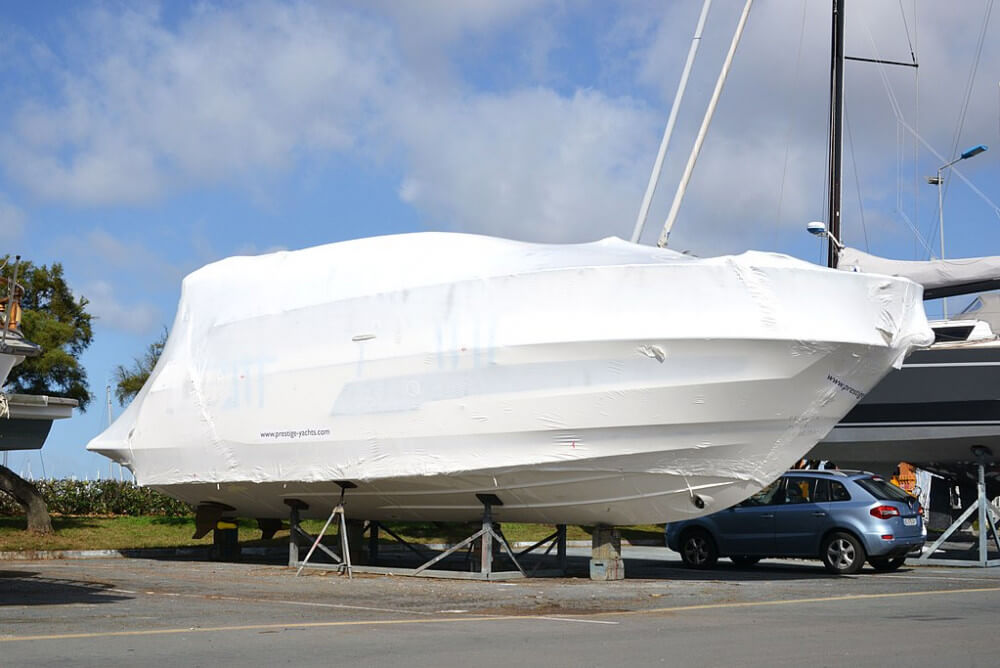
Some other maintenance costs:
- Batteries: deep cycle batteries need replacing every 4-6 years at $600
- Deck hardware: every 20-30 years (bullseyes, tiller, eye straps) at $1,500
Joining a Sailing Club
If you're new to sailing, you might want to consider joining a sailboat club. This might help you to get tips, make friends, and learn in a safe environment. Most clubs also organize races, which are a great way to quickly improve your sailing skills.
But it comes at a cost. Sailing clubs are very expensive.
Initiation fees range anywhere between $1,000 - $4,000. But that's not all.
Then there's an annual fee of $500 - $1,000 per year. And lot's of additional fees: for dining, lockers, etc.
If you're willing to skip Christmas, go for it.
How about making up for some of those losses? There's just no better feeling than earning back all that cash with the same thing that you've spent it on in the first place.
There are lot's of ways to earn a little extra with your boat - if you're willing to put in the effort. Here are a few ideas:
- hire yourself out as the captain of a personalized cruise (for families, newly-weds, groups of colleagues)
- take people to go fishing
- hire your boat out to yacht charter companies
- teach someone to sail
- take photographers, film crews, and artists on tours
- organize dolphin and whale watching tours
- delivery of cargo - some places just can't be reached by car, for example, the city center of Giethoorn (Dutch Venice). So you have a competitive edge here!

Some ideas to save money:
- install solar panels (no more dock power)
- buy a and cheap small boat (kayak or someting) to get to offshore anchorage (which are cheaper)
- shop around for insurance
- get gas at the gas station, not the marina
- do your own maintenance as much as possible
- find a friend with water access to avoid mooring
- use it a lot (prevents stuff from breaking)
- fix things that are broken immediately
- keep your sails out of the sun
- do your own upgrades
For example, convert your winches to self-tailing yourself. I was really surprised by how cheaply this can be done yourself. Read my article on how to do it here (opens in new tab).
How much does it cost to paint a boat hull? Painting a boat hull with antifouling paint will usually cost between $15 - $20 per feet. For example, a 25-foot sailboat will cost roughly $500. A 35-foot sailboat will cost $800 to repaint. You can get premium paints and services, which can quadruple the cost. Typically, a boat needs to be repainted every two years.
Why are used sailboats so cheap? Sailboats require a lot of skill and patience. They can be quite expensive to maintain and to keep in slip. Some people find they can't afford the marina rent, upkeep, and other costs; sometimes they simply don't want to; others don't want to sail anymore. In some cases, expensive and important parts are missing.
How much does it cost to charter a sailboat? The price of a charter depends on location, size of the vessel, crew or bareboat chartering, and so on. However, on average, a bareboat yacht charter will cost anywhere from $5,000 - $10,000 per week. Crewed charters cost anywhere between $10,000 - $15,000 per week. Superyachts may cost up to $150,000 per week.
Thanks to Jean-Pierre Bazard for letting me use his wrapped boat photo under CC BY-SA 3.0

Excellent write up. This is honestly the type of information that’s hard to find as you’re trying to get into sailing. I’m a car guy. People think of car collecting like Jay Leno, but it can be done cheaply. I get the impression sailing is the same way.
Shawn Buckles
Hi Stephen, thanks a lot for your kind words, really appreciate it! It really is kind of the same, it’s all about how much time and effort you’re willing to put in. As with anything, lots can be achieved with energy and attention.
Thanks again.
Serious question. Why are you buying a trailer for a 40 ft yacht? That doesn’t even make sense.
Hi Christian, thanks for the remark. 40 ft boat trailers do actually exist, although I agree that most people probably won’t trailer a 40 ft yacht.
Thank a lot for the very useful information„ now you caused me to start thinking why don’t I start sailing lessons to do round the world in a sail boat ( instead of an aircraft)
Hello Hatem, you’re very welcome. Smooth sailing, or flying.
Hi, I am not familiar with boats. My boss just asked me to find a nice boat for him. Thank you for this informative post, this helps me so much. By the way, I already found a site selling yachts here in the Philippines, here’s the link https://rayomarine.com Do you have any suggestion with brand and boat type. Thank you! More power!
Very good information, but I am having a hard time matching these number here in Southern California. Cheapest slip I found so for is $375/month, on a very run down and far from the ocean marina. At the harbor that I want, the cheapest I found is $800/month. Even if I was given a boat for free, just keeping it in place would cost me almost 10k/year
Excellent writeup, Shawn! Thank you very much for all your hard work and I look forward to reading your other articles on the subject.
Great info! We are in the market for our first sailboat and this answered many of our questions. Although I do agree with Rafael that slip prices in Southern California our much higher than what you listed. The marina we like will run about $1000 a month.
Thank you for your artical…a LOT of useful information included in it sir. I have been thinking about buying one for two years now, since I moved to a harbor town near where I grew up. We always had motor boats when I was young. But, I always loved sailing MUCH much more! I love the quiet of it, and always something to do, rather than just sit, drive, gas it up, dock, repeat. Laugh!! It’s about a ten min walk to the marina from here..and I have nothing but time. However my health is pretty bad. I just don’t know if I could handle it all alone. I’m thinking maybe a 25-30 foot cruiser. Thanks again sir!! I look forward to reading your other articles. Sincerely, Gary Heaton Olcott, Ny
Thanks a million! First time I come across an article that complete and with so much effort. For people thinking about buying a boat the info you provide is priceless.
John Callahan
Good information, but any article on prices should have a date associated with it. I see no indication of when this article was posted.
Thank you so much for this well done article. We’re looking at getting a boat and you’ve answered questions we didn’t even know we had.
Awesome article good job i am from Slovenia and thinking about buyng sailboat and sail for 6 monhs per year.I hawe bean looking on Holland sites too buy one can i maybe find auctions too buy a sailingboat i bawe wach Troswijk but they do t hawe any up ther?
Many of the costs quoted look very low to me, especially in the first article. Was this written a long time ago?
Excellent article. Am wondering though how do I dispose of a used boat if I get tired of it and can’t sell it or possibly run it aground. Maybe a 40 ft sloop?
Chris Kenny
Thanks for this infor.
Peace sailing.
Benjamin Sklar
Extremely helpful and interesting article! Thank you!
John Wallace
This is the most accurate information I have ever seen about boat ownership costs.
Many thanks!!!!
Leave a comment
You may also like, how much does it cost to dock a boat for a year.
Before buying your first boat you probably want to know how much it will cost you each year. So did I, so I checked hundreds of slips, and here are the numbers I …

Average Cost of Buying & Owning a Catamaran (With 4 Examples)

Cost of Catamaran vs. Monohull: Which is more expensive?

9 Ways to Learn to Sail for (Practically) Free

How To Live on a Sailboat: Consider These 5 Things
Own your first boat within a year on any budget.
A sailboat doesn't have to be expensive if you know what you're doing. If you want to learn how to make your sailing dream reality within a year, leave your email and I'll send you free updates . I don't like spam - I will only send helpful content.
Ready to Own Your First Boat?
Just tell us the best email address to send your tips to:

Transport a Sailboat - Costs & How To Ship

Last Updated by
Daniel Wade
June 15, 2022
Sailboat transport is an essential and very well-established boating service with numerous options.
Sailboats can be transported by single-axle trailers, multi-axle trailers, cargo ships, and occasionally trains. Sailboats can also be transported across an ocean on their own with the help of a hired captain and crew. Costs vary widely based on size and type, and they range from $200 to more than $15,000.
In this article, we’ll cover several of the most common sailboat transportation methods. We’ll cover the details and requirements of each method, along with the required method by sailboat size and type. Additionally, we’ll explore the average costs of each method for a typical production cruising sailboat.
We sourced the information used in this article from sailboat transport agencies along with government towing and transportation guides. We carefully researched pricing to help you get a basic idea of what it’ll cost to transport a sailboat.
Table of contents
Is Transporting a Sailboat Difficult?
It’s not necessarily difficult to transport a sailboat, but it does require care and careful planning. Your responsibilities as the sailboat owner range from trailer maintenance and careful driving to the organization of international logistics. In this article, we’ll discuss ways to streamline the process and make it easier.
Is Sailboat Transport Expensive?
Sailboat transport can be expensive, but it doesn’t have to be. Obviously, moving a small sailboat is relatively cheap in comparison, especially if you already have a truck and a trailer.
The cost of transporting a larger boat is higher, as you’ll probably need to hire a shipping company or a crew.
There are multiple ways to transport a large sailboat, and the more economical method isn’t always immediately evident. Some boats may be cheaper to ship on a specially-designed yacht carrying vessel, while others may be cheaper if you hire a delivery crew.
Pricing varies between boats, locations, and destinations, so it’s essential to research all available methods and request multiple quotes. If you do, you could save thousands on transport and delivery, not to mention insurance costs to protect your vessel from possible damage.
Sailboat Transport Methods
There are several ways to transport a sailboat, and the ideal method depends upon the size and dry weight of the vessel. Dry weight is distinct from displacement, so it’s important to ensure that you have the correct number. Here are the most common ways to transport sailboats short and long distances.
Self Towing
Some sailboats can be towed, though the vehicle, trailer type, and license requirements vary based on size. The smallest and lightest dinghies and pocket cruisers can be towed by most typical cars, provided you have a heavy-duty tow hitch installed.
Larger sailboats, in the 20-foot range and longer, usually need to be towed by a pickup truck or SUV. A half-ton gasoline pickup truck is sufficient for lighter vessels, as long as the dry weight doesn’t exceed the vehicle’s towing capacity.
Also, remember that some automakers determine towing capacity under ideal test conditions, so your truck’s actual towing ability may be slightly lower than its rating.
You’ll have to collapse or remove the mast, boom, and standing rigging of the sailboat and secure it, regardless of its size.
Most trailer sailers can be towed by half-ton or 3/4 ton single rear wheel trucks. Larger sailboats, such as towable coastal cruisers, may require a multi-axle trailer and a gooseneck. This setup is often found with a dually 3/4 ton or 1-ton truck.
The Basics of Towing Rules in the United States
The rules of the road are clear when it comes to towing. With a Class C license (a standard driver’s license), the maximum overall trailer length you can tow is 60 feet. The maximum length of a Class C trailer surface is 53 feet.
Length usually isn’t the issue when it comes to towing sailboats. The maximum width of a class C trailer is 8 ft 6 in, which includes the items on the trailer. The regulations mean that the beam of your boat can’t exceed about 8 feet, give or take a couple of inches.
With a more advanced license or a Commercial Driver’s License (CDL), you can tow a much larger trailer and drive a semi-truck. Some larger sailboats with greater beam width can be towed this way, though only if they remain below the maximum height.
Height requirements for trailers vary between 13 ft, 6 inches to 14 ft, depending on the location. This is measured from the ground to the top of the item on the trailer.
Be sure to plan your route carefully if you’re towing a boat with a full keel, as some older overpasses and railroad bridges are much shorter than 13 feet.
Professional Towing Services
It’s usually best to leave the towing to professionals, especially if you’re towing a large boat. Experienced drivers with big rigs and commercial licenses can transport surprisingly large vessels safely but at a cost. The benefit of using a professional service is that you’re taking the risk off your shoulders.
Many professional towing services offer insurance, which is essential. Insurance protects the loading and unloading of the boat and covers any damages that occur en route. For the price, it’s a no-brainer.
In most cases, the tow company will not be able to help you launch your boat. You’re responsible for arranging boat crane services at your destination. It’s best to plan carefully, as you may end up paying more if you make the driver wait too long.
Cost of Professional Sailboat Towing Services
Cost varies widely based on the company, location, and size of the load. Most towing companies have a base fee, a fee of the assessed load, and then a per-mile charge. Some companies have different fee structures.
Companies that offer quotes usually predict a charge of between $500 and $1,000 for typical trips, though it can cost as little as $300 if you have a relatively small boat and it only needs to travel a short distance.
Shipping a Sailboat on a Cargo Ship
Large and small sailboats are frequently sent across oceans via cargo ships. This method is time-tested and relatively cost-effective, though it’s not as straightforward as just sailing the boat across.
Some people hire an agent to arrange shipping, which is the easiest and most reliable way to have a headache-free experience.
Shipping a sailboat by sea is slower than over-the-road transport, and schedules are less flexible. Often, you’ll have to wait for a spot to open up on a specifically-designed yacht carrying ship.
Once the ships are loaded, they set out at predetermined times that might be months ahead of when you booked. The best way to ensure you get a spot on a yacht shipping vessel is to plan well in advance of when you actually need to transport the vessel.
Logistics are the greatest challenge of shipping a boat on a larger ship. If you don’t work with an agent or an accommodating shipping company, you could have to work out the following and more:
- Transportation to the shipping yard
- Loading and securing instructions
- Shipping destination
- Payments to various services
- Customs in the destination country (if outside of the U.S.)
- Taxes and import fees
- Declarations
- Inspections
- Unloading at the destination
- Transportation from the destination port to the marina
As you can see, there are lots of reasons to hire a professional to manage the minutiae of shipping a sailboat. The last thing you want is to have your boat seized at customs or have it dropped off in an unguarded yard in the wrong location.
Cost to Ship a Sailboat on a Cargo Ship
Shipping costs for ocean-going boat transport are lower than many people expect. A lot of factors are involved, including the size of the boat, its height (from keel to mast top), its displacement, and the distance it needs to be shipped.
The lowest prices you’ll find to ship an average-sized boat are around $3,000 to $5,000. A more typical estimate for an average sailboat is between $6,000 and $10,000. Some vessels and destinations cost upwards of $15,000. Costs tend to increase with the size and distance, and the value of your sailboat also plays a part.
Prices in the yacht shipping industry are competitive, which is why it’s relatively affordable to ship a boat over an ocean. It’s surprisingly popular as well, and there are more than a dozen shipping companies offering long-distance ocean transport specifically for yachts of various sizes.
Hired Delivery
Hired crews for boat delivery is the other way to transport a sailboat over the water. Crew services find a captain and a small professional crew to sail your boat for you.
This is a great option for large boats, as it’s often less expensive and time-consuming than shipping it on a larger vessel.
Hired crew delivery services are offered by companies and experienced individuals. You can even find a trusted friend to crew your boat for you, and they can hire a crew member or two to accompany them for the journey.
While under hire, the crew will be living in your boat. Crew members come from all backgrounds, and many sailors spend a summer or two working for a charter service to make some money or get free transportation to other countries.
Cost to Hire a Delivery Crew
Hired crew delivery costs vary, though the more hands you need, the more it costs. Crews and captains usually charge daily rates for yacht delivery services. A fast sailboat is almost always cheaper to transport than a slow sailboat.
As an example, we’ll use the services of Captain James Lowe , who is a USCG licensed 200-ton Master. As of the writing of this article, Captain James Lowe charges between $350 and $425 per day for his services, depending on the size of the vessel. Deckhands cost $175 per day per person, which is in addition to the Captain’s charges.
These are the base rates, and they’re a good representation of what professional crewed delivery costs. You may find cheaper rates with other groups or individuals, but it’s worth the cost if you want a trustworthy and experienced crew.
Additional charges often include transportation costs (to and from the destinations), fuel costs (for heating, cooking, and motoring), and a deposit is usually required for fuel. These costs are impossible to predict without knowing your specific plans, so it’s best to reach out to Captain James Lowe for a specialized quote.
Hired crew delivery services usually have a minimum crew requirement for different boat sizes and types. In this case, sailboats require a minimum of one deckhand in addition to a captain. Larger sailing vessels of 65 feet or greater require two or more additional deckhands.
Related Articles
I've personally had thousands of questions about sailing and sailboats over the years. As I learn and experience sailing, and the community, I share the answers that work and make sense to me, here on Life of Sailing.
by this author
Travel Logistics
Most Recent

What Does "Sailing By The Lee" Mean?
October 3, 2023

The Best Sailing Schools And Programs: Reviews & Ratings
September 26, 2023
Important Legal Info
Lifeofsailing.com is a participant in the Amazon Services LLC Associates Program, an affiliate advertising program designed to provide a means for sites to earn advertising fees by advertising and linking to Amazon. This site also participates in other affiliate programs and is compensated for referring traffic and business to these companies.
Similar Posts

How To Choose The Right Sailing Instructor
August 16, 2023

Cost To Sail Around The World
May 16, 2023

Small Sailboat Sizes: A Complete Guide
October 30, 2022
Popular Posts

Best Liveaboard Catamaran Sailboats
December 28, 2023

Can a Novice Sail Around the World?
Elizabeth O'Malley

4 Best Electric Outboard Motors

How Long Did It Take The Vikings To Sail To England?

10 Best Sailboat Brands (And Why)
December 20, 2023

7 Best Places To Liveaboard A Sailboat
Get the best sailing content.
Top Rated Posts
Lifeofsailing.com is a participant in the Amazon Services LLC Associates Program, an affiliate advertising program designed to provide a means for sites to earn advertising fees by advertising and linking to Amazon. This site also participates in other affiliate programs and is compensated for referring traffic and business to these companies. (866) 342-SAIL
© 2024 Life of Sailing Email: [email protected] Address: 11816 Inwood Rd #3024 Dallas, TX 75244 Disclaimer Privacy Policy

Boat Building Cost Calculator
Boat building costs vary widely depending on boat type, size, materials, and features. Small dinghies can range from $500 to $5,000, while larger yachts can cost from $100,000 to over $20 million. Labor costs, material choices, and customization play significant roles in determining the final cost. Accurate estimates require detailed specifications and professional consultation.
Estimating boat building costs can be quite complex and depends on various factors, including the type and size of the boat, materials used, labor costs, and additional features. Here’s a simplified table with rough cost estimates for different types of boats:
These cost estimates are very rough and can vary significantly based on your location, the boat’s design, and the specific features and materials you choose. Additionally, labor costs can be a substantial factor, especially if you hire professionals for construction. Always consult with boatbuilders or experts for accurate, detailed estimates.
How much does it cost to build a wooden boat? The cost to build a wooden boat can vary significantly depending on the size, design, and materials used. It can range from a few thousand dollars for a small boat to hundreds of thousands for a larger, more complex vessel.
What is the process of making boat building? The boat building process involves various stages such as design, lofting (drawing the boat’s full-size lines), constructing the hull and deck, installing systems and equipment, finishing, and launching.
How much does it cost to build a sailing yacht? The cost to build a sailing yacht can vary widely based on its size, materials, and level of customization. It can range from hundreds of thousands to several million dollars.
What is the best wood to build a boat? Commonly used woods for boat building include mahogany, oak, cedar, and teak. Each wood has its strengths and characteristics, and the choice depends on factors like the boat’s purpose and budget.
What is the lifespan of a wooden boat? The lifespan of a wooden boat depends on the quality of construction, maintenance, and usage. Well-maintained wooden boats can last for decades or even centuries.
What is the best material to build a boat? The best material to build a boat depends on factors such as the boat’s purpose, design, and budget. Common materials include fiberglass, aluminum, steel, and wood.
What is the easiest boat building method? For beginners, stitch-and-glue or plywood construction is often considered the easiest boat building method due to its simplicity and minimal use of specialized tools.
What is marine plywood called? Marine plywood is sometimes referred to as “marine-grade plywood” or “marine-grade exterior plywood.” It is a high-quality plywood specifically designed for marine and boat-building applications.
Is it cheaper to buy or build a yacht? Building a yacht can sometimes be cheaper than buying a ready-made one, especially if you have the skills and time to do it yourself. However, it depends on the yacht’s size and complexity.
Does owning a yacht make money? Owning a yacht is generally considered a significant expense. While some yacht owners may charter their boats to offset costs, it is not typically a profitable venture.
How much does it cost to run a yacht per year? The annual operating costs of a yacht can vary greatly depending on its size, maintenance needs, crew salaries, insurance, mooring fees, and other factors. It can range from tens of thousands to millions of dollars per year.
Is wood or fiberglass better for a boat? Wood and fiberglass each have their advantages and disadvantages. Fiberglass is more durable and requires less maintenance, while wood provides a classic look and can be easier to repair.
Do you need marine grade plywood to build a boat? Using marine-grade plywood is recommended for boat building as it is specifically designed to resist moisture and is more durable than standard plywood.
What makes a wooden boat waterproof? A wooden boat is made waterproof through proper construction techniques, including sealing seams, using marine-grade sealants, and applying protective coatings such as epoxy or varnish.
What type of hull lasts the longest? A properly maintained fiberglass hull can last for decades, making it one of the longest-lasting hull materials.
Are wooden boats expensive to maintain? Wooden boats can be more expensive to maintain compared to some other materials, as they require regular varnishing, painting, and sealing to protect against moisture.
How long should a boat engine last? The lifespan of a boat engine varies depending on factors like usage, maintenance, and the type of engine. Well-maintained engines can last for thousands of hours or more.
What is the best shape of a boat? There is no one “best” shape for a boat, as it depends on the boat’s intended use and performance requirements. Different hull shapes are designed for various conditions and purposes.
What is the best block to build a boat? The best block in “Build a Boat for Treasure” (a popular Roblox game) can vary depending on individual preferences and strategies in the game.
What kind of plywood should I use to build a boat? For boat building, marine-grade plywood is recommended due to its resistance to moisture and durability.
What is a good first boat to build? A good first boat to build for beginners is often a small, simple boat using plywood construction, such as a rowboat or kayak.
What is the best code in build a boat? As “Build a Boat for Treasure” is a game on the Roblox platform, the best code can vary, as new codes are often released by the developers.
How many days does it take to build a boat? The time it takes to build a boat can vary significantly depending on the size, complexity, and building method. It can range from a few days for a small boat to several months or more for larger vessels.
Is marine plywood worth the money? Marine plywood is worth the money for boat building and other applications where resistance to moisture and durability are essential.
What are the disadvantages of marine plywood? Marine plywood can be more expensive than standard plywood, and its availability may be limited in some areas.
How do you waterproof plywood for a boat floor? To waterproof plywood for a boat floor, use marine-grade sealants or epoxy coatings to protect it from moisture and water penetration.
Why do the rich buy yachts? Yachts are often seen as symbols of wealth, luxury, and status. They offer a private and exclusive way to travel and enjoy leisure time on the water.
How much is a 100-foot yacht? The cost of a 100-foot yacht can vary significantly based on the brand, features, and customization options. It can range from several million to tens of millions of dollars.
Why have boats become so expensive? Boats can be expensive due to the costs of materials, labor, and specialized engineering required for marine applications. Additionally, luxury features and high demand can drive up prices.
What is the average yacht salary? The average salary for yacht crew members can vary based on their roles and experience. It can range from a few thousand to tens of thousands of dollars per month.
At what point does a boat become a yacht? The term “yacht” is often used loosely and can vary depending on regional and cultural differences. Generally, larger and more luxurious boats are often referred to as yachts.
Do yacht crews get paid besides tips? Yes, yacht crew members typically receive salaries in addition to any tips they may receive from guests.
How many crew for a 100-foot yacht? The number of crew members on a 100-foot yacht can vary depending on its operations and guest requirements. It can range from a few to several crew members.
Is it expensive to maintain a yacht? Yes, maintaining a yacht can be expensive due to ongoing costs such as crew salaries, fuel, maintenance, insurance, and mooring fees.
How many miles does a yacht last? The lifespan of a yacht can vary depending on its maintenance and usage. Well-maintained yachts can last for several decades.
How long does fiberglass last on a boat? Fiberglass on a boat can last for many years, especially if it is well-maintained and protected from exposure to harsh conditions.
What is the best metal for boat building? Aluminum is a popular metal for boat building due to its lightweight, corrosion-resistant properties, and durability.
Do fiberglass boats crack easily? Fiberglass boats are generally durable and not prone to cracking under normal usage and conditions.
How thick should marine plywood be for boat floor? The thickness of marine plywood for a boat floor can vary depending on the boat’s size and intended use. Typically, plywood thickness ranging from 3/8 inch to 3/4 inch is used for boat flooring.
How long will plywood last in a boat? The lifespan of plywood in a boat can vary depending on its quality, usage, and exposure to the elements. Well-maintained marine-grade plywood can last for many years.
What is the lifespan of marine plywood? Marine plywood, when properly maintained and protected from moisture, can last for decades.
Why don’t wooden boats sink? Wooden boats can float because of the principle of buoyancy, where the weight of the water displaced by the boat’s hull equals the boat’s weight.
Why do wooden boats not rot? Properly treated and maintained wooden boats are less likely to rot due to protective coatings and sealants that prevent water penetration and decay.
How did Vikings waterproof their boats? Vikings used a technique called “clinker” or “lapstrake” construction, where overlapping wooden planks were fastened together with iron rivets and caulked with materials like tar or animal hair to make their boats watertight.
What is the best hull for choppy water? A hull with a deep-V design is often considered the best for choppy water, as it can provide a smoother and more stable ride.
What is the longest-lasting boat flooring? Fiberglass or composite flooring can be among the longest-lasting boat flooring options due to their resistance to water and decay.
What hull shape holds the most weight? Hull shapes with a flatter bottom, such as flat-bottomed or pontoon boats, can generally carry more weight compared to other hull designs.
What are the disadvantages of a wooden boat? Disadvantages of wooden boats can include higher maintenance needs, susceptibility to rot if not properly cared for, and higher initial costs compared to some other boat materials.
What time of year are boats cheapest? Boat prices can vary throughout the year, but boats may be cheaper during the offseason or winter months when demand is lower.
What is the best wood to build a boat? Apologies, this question was repeated. Mahogany, oak, cedar, and teak are common choices for boat building, depending on the boat’s purpose and budget.
What is considered an old boat? The classification of an old boat can vary, but boats that are several decades old or more are often considered “old” in the boating community.
How long can a boat sit without running? A boat can sit idle for weeks or months without running, but it’s essential to properly maintain it during storage to prevent issues.
What is too many hours on a boat? The number of engine hours considered too many on a boat depends on the engine type, maintenance history, and how the boat was used. Properly maintained marine engines can last for thousands of hours.
What is the strongest part of a boat? The hull, particularly the keel or centerline, is generally considered the strongest part of a boat, providing structural support and stability.
What hull shape is fastest? The hull shape that is fastest depends on the boat’s intended use and design. Planing hulls are generally faster at higher speeds, while displacement hulls are more efficient at lower speeds.
What’s better flat-bottom or V-bottom boat? A V-bottom boat is generally better suited for rough water conditions, as it can provide a smoother ride and better handling compared to flat-bottom boats.
What is the hardest stage in build a boat? The difficulty of various stages in boat building can vary based on individual skills and experience. Some find the final finishing and detail work to be the most challenging.
What is the easiest boat to build? Simple boats like a stitch-and-glue kayak or rowboat are often considered the easiest to build for beginners.
What is the strongest boat building material? Aluminum and steel are strong boat building materials, offering durability and impact resistance.
Do I really need marine grade plywood? Marine-grade plywood is recommended for boat building due to its superior water resistance and durability.
Can I use pressure-treated plywood in my boat? Pressure-treated plywood is not recommended for boat building, as the chemicals used in the treatment may be harmful to marine environments.
Is marine plywood stronger than regular plywood? Marine plywood is generally stronger and more durable than regular plywood due to its construction and bonding methods.
What is the most stable boat in rough water? Boats with deep-V hulls are often more stable in rough water due to their ability to cut through waves and maintain better control.
What is the most stable boat design? Catamarans and pontoon boats are known for their stability due to their wide and stable hull designs.
What is the rarest thing in build a boat? As “Build a Boat for Treasure” is a dynamic online game, rare items can vary over time based on updates and events.
What are the rarest Build a Boat items? As an online game, the rarity of items in “Build a Boat for Treasure” can change, and different players may value different items differently.
How long should a boat be for the ocean? Boats intended for ocean travel should generally be at least 30 feet in length to handle the challenges of offshore conditions.
How long is a boat before it becomes a ship? The distinction between a boat and a ship is not solely based on length, but generally, a vessel becomes a ship when it reaches around 197 feet (60 meters) in length.

GEG Calculators is a comprehensive online platform that offers a wide range of calculators to cater to various needs. With over 300 calculators covering finance, health, science, mathematics, and more, GEG Calculators provides users with accurate and convenient tools for everyday calculations. The website’s user-friendly interface ensures easy navigation and accessibility, making it suitable for people from all walks of life. Whether it’s financial planning, health assessments, or educational purposes, GEG Calculators has a calculator to suit every requirement. With its reliable and up-to-date calculations, GEG Calculators has become a go-to resource for individuals, professionals, and students seeking quick and precise results for their calculations.
Related posts:
- Water Usage Calculator Office Building
- Water Meter Size for Apartment Building Calculator
- Land to Building Ratio Calculator
- Protein Carb Fat Ratio for Muscle-Building Calculator
- Natural Muscle Building Potential Calculator
- Electrical Load Calculator for Commercial Building
- Metal Building Finance Calculator
- House Building Finance Corporation Loan Calculator
- Steel Building Cost Calculator
- Duplex Building Cost Calculator
- Hotel Building Cost Calculator
- Building a Garden Wall Cost Calculator
- The Sky’s the Limit: Exploring the Cost of Building a Twenty-Story Skyscraper
- Water Usage Calculator for Building Control
- Metal Building Insulation Calculator
- Boat Shipping Cost Calculator
- Boat Shipping Cost Calculator Canada
- Boat Fuel Cost Calculator
- Boat Ownership Cost Calculator
- Boat Dock Cost Calculator
- Jon Boat Weight Capacity Calculator
- Boat Fuel Tank Size Calculator
- Boat Trailer Tongue Weight Calculator
- Boat Travel Time Calculator
- Boat Lift Size Calculator
- Boat Battery Size Calculator
- Boat Lift Capacity Calculator
- Boat Fuel Burn Calculator
- Boat Trailer Size Calculator
- Boat Bottom Paint Calculator
- Topsides Boat Paint Calculator
- Boat Propeller Calculator
- Fishing Boat Propeller Calculator
- Pontoon Boat Propeller Calculator
- RC Boat Propeller Calculator
- Sailing Boat Propeller Calculator
- Narrow Boat Propeller Calculator
- Electric Boat Propeller Calculator
- Inboard Boat Propeller Calculator
- Jet Boat Impeller Calculator
Leave a Comment Cancel reply
Save my name, email, and website in this browser for the next time I comment.

IMAGES
VIDEO
COMMENTS
Boat plans 30 - 40 ft. This section of Bruce Roberts sailboat designs and boat plans cover the following vessels in the range of 30 to 40 foot. The Roberts, Classic, Henry Morgan, Offshore, Power Cat, PCF 36/40, and Canoe Stern designs. Boat building plans using steel, aluminium, fiberglass wood/epoxy, dependant on the design, are available.
To guarantee a smooth sailing experience, follow these steps: 1. Carefully inspect the hull of the sailboat for any damage or cracks. Be sure to check the seams and joints thoroughly. 2. Take the time to check the rigging, including the mast, shrouds, stays, and halyards, for signs of wear, fraying, or corrosion. 3.
If you want to hop on a sailboat project, let me help you break down the costs of building one. The average price range for building a sailboat from scratch is between $10,000 and $20,000. A self-build kit for a 17' sailboat can be purchased for $2,500, while a sail-away Puur 17 kit can cost between $14,000 and $18,000.
For example, the 21ft gaff-rigged cutter I'm currently building will end up costing between $33,000 and $35,000, fully outfitted—several thousand dollars more than the new prices of a couple of popular fiberglass boats near the same size. And yes, since it's wood, it will demand more maintenance.
Let the primer coat dry completely as per instructions. Use a brush or roller to apply the desired paint color, starting from the top and working down. Allow the paint to dry between coats and apply more coats if needed. To varnish the sailboat, apply a thin and even coat in the direction of the wood grain.
For DIY enthusiasts, constructing a small sailboat like a dinghy can take anywhere from 2 to 6 months. More elaborate designs, like multi-hull sailboats with intricate rigging, may take up to 2-5 years to complete. On the other hand, hiring a professional shipyard can cut the time by half.
Check out my Patreon to help support the boat build! - https://www.patreon.com/jackwood25Guten Morgen! After months of building and filming, I'm finally post...
A 3-year DIY homebuilder project — building a 40ft catamaran. If you have dreamed of making a boat and sailing off over the horizon — do it. The book "Build...
Building a wooden sailboat can take approximately 100 hours over a span of 3 months. (Source: Instructables) A wooden sailboat can cost around $1,000 to build. (Source: Instructables) ... The wooden sailboat described in the reference is an 8-foot long pram, featuring classic lines and made from 4×8 sheets of plywood. ...
Here are the steps to follow when installing the cabin: Build the cabin on a flat surface using marine-grade plywood. Cut the cabin to fit the deck and hull and sand the edges to ensure a tight fit. Apply a layer of epoxy to the cabin and deck joint to seal it. Secure the cabin to the deck using screws or bolts.
How to Build a Boat: Part 1: The All-Important Preparation. Part 2: How to Build a Boat Hull in Western Red Cedar. Part 3: Sheathing the Hull in Woven Glass Rovings. Part 4: Cutting and Installing the Plywood Bulkheads. Part 5: Building the Interior Structure. Part 6: Constructing the Deck and Coach Roof.
Seventy-year-old retired engineer Michael Danesi began planning his dream boat in the early 2000s. Still working on it today, he spends 100 to 150 hours a mo...
Build your own sail boat yatch from 9 feet to 63 feet in length. Fully featured wooden boat plans for home construction in Plywood, Steel and Fibre Glass. ... Norsk 40 $ 285.00 - $ 290.00 (USD) Select options. Royal Suva 52 $ 320.00 - $ 335.00 (USD) Select options. Samson 'C-Baron' 55 $ 385.00 - $ 400.00 (USD)
Sailboats that you can build from home will likely be a small boat under 20 feet. These could be from many different boat suppliers such as B&B Yachts, Brooks Boat Designs, and Chase Small Craft. Boat plans will vary based on your budget and how much time you have on your hands. Based on my previous experience, building your own boat will take ...
It's essential to understand that every sailboat is unique and built to order, so the duration required for construction varies depending on multiple factors such as the design, materials, and equipment specifications. However, an average 40-foot sailboat takes around six to eighteen months to build, depending on several factors.
If you were to build a 40-foot (12.1-meter) catamaran, your cost of materials would range between 20-30% of the total cost. Therefore, for $300,000 total, the boat's materials would range between $60,000 and $90,000. The hull tends to range between 15-35% of the total build.
The masts and standing rigging will cost more than $4,000. Add sails, running rigging and deck hardware to that. Finally, and most important, your design will likely be poor and have structural problems. After working on the build for a couple of years, you will learn enough to see the defects.
The current price of a sail-away Puur 17 kit is $14,000 to $18,000 depending upon the options you choose. Is a Puur 17 really that much more expensive than other self-build sailboat kits? In a word, No. You should expect to spend $300-600 per foot completing a quality self-built 16-20' daysailer.
Sombrio is a 33' wooden sailboat that was lovingly built by Ian (a.k.a. KIM) over the course of 10 years with mostly reclaimed lumber that he collected and m...
Best-value ocean cruiser (40') $166,000. $1,300. The average price of new sailboats is $425,000 ($127,000 to $821,000). The average price of used sailboats is $278,000 ($67,000 to $555,000). Maintenance costs are on average $2,000 - $3,000 per year, and the average total annual cost is $3,000 to $7,000. Of course the price of a sailboat depends ...
Sailboats can be transported by single-axle trailers, multi-axle trailers, cargo ships, and occasionally trains. Sailboats can also be transported across an ocean on their own with the help of a hired captain and crew. Costs vary widely based on size and type, and they range from $200 to more than $15,000.
July 25, 2023 by GEGCalculators. Boat building costs vary widely depending on boat type, size, materials, and features. Small dinghies can range from $500 to $5,000, while larger yachts can cost from $100,000 to over $20 million. Labor costs, material choices, and customization play significant roles in determining the final cost.
How I build a 39ft Offshore sailing cutter at home using C-Flex fiberglass system. Building the hull and deck molds, outfitting history from interior woodwor...